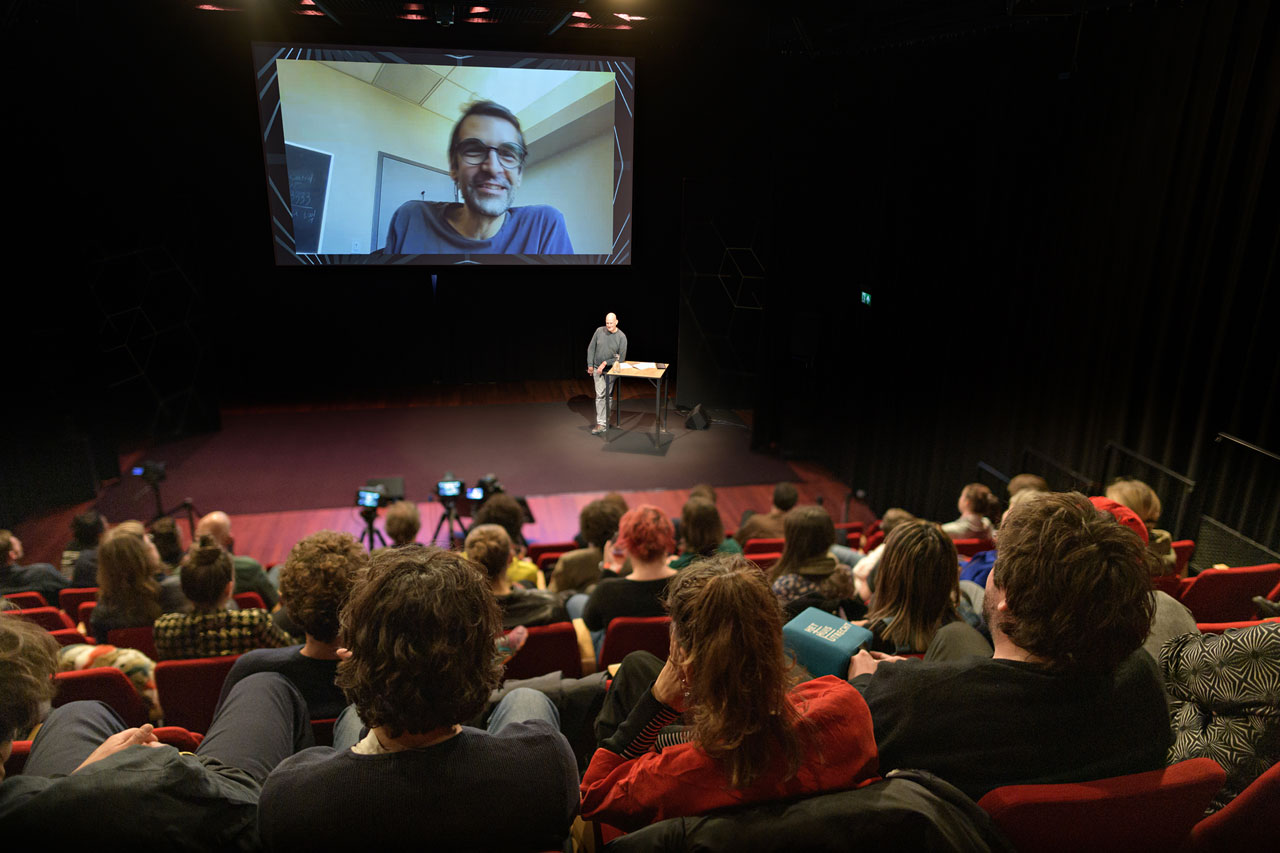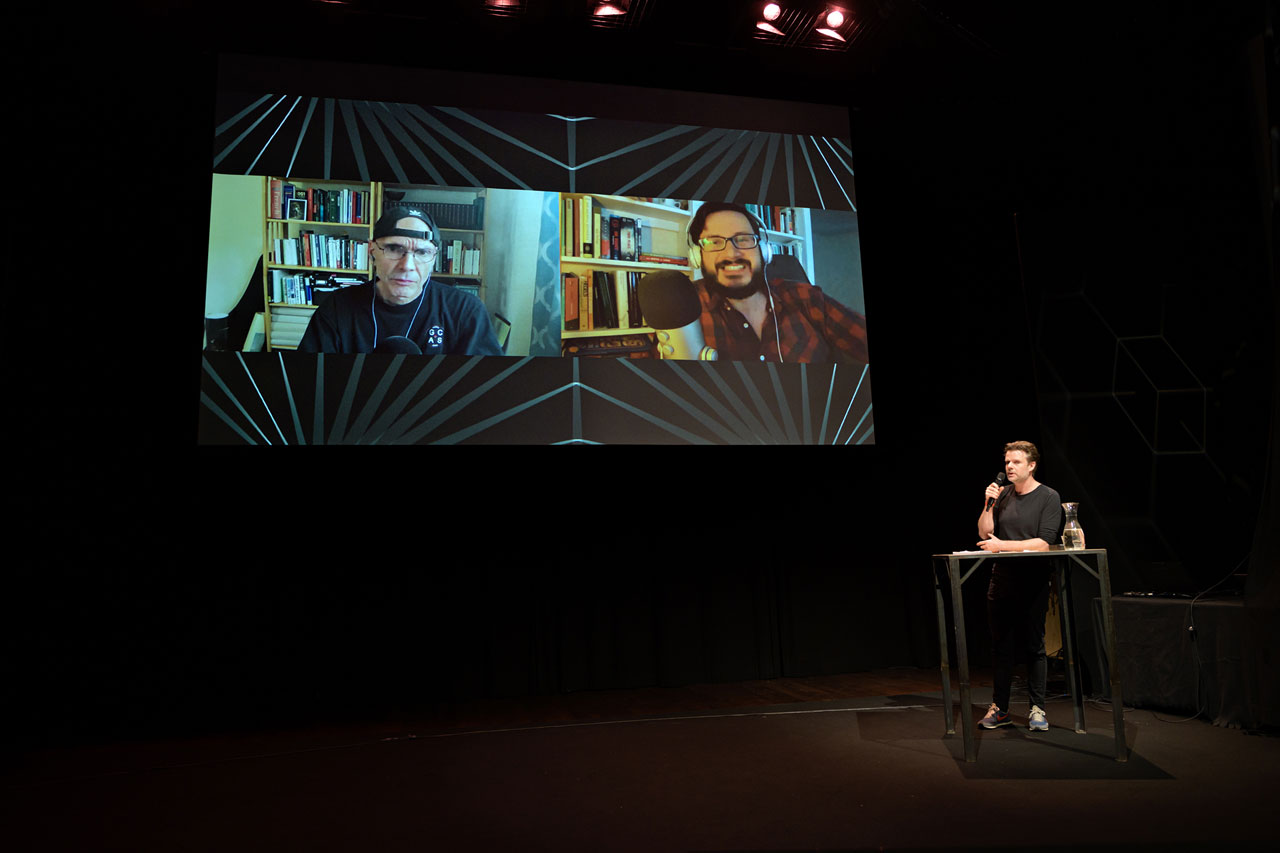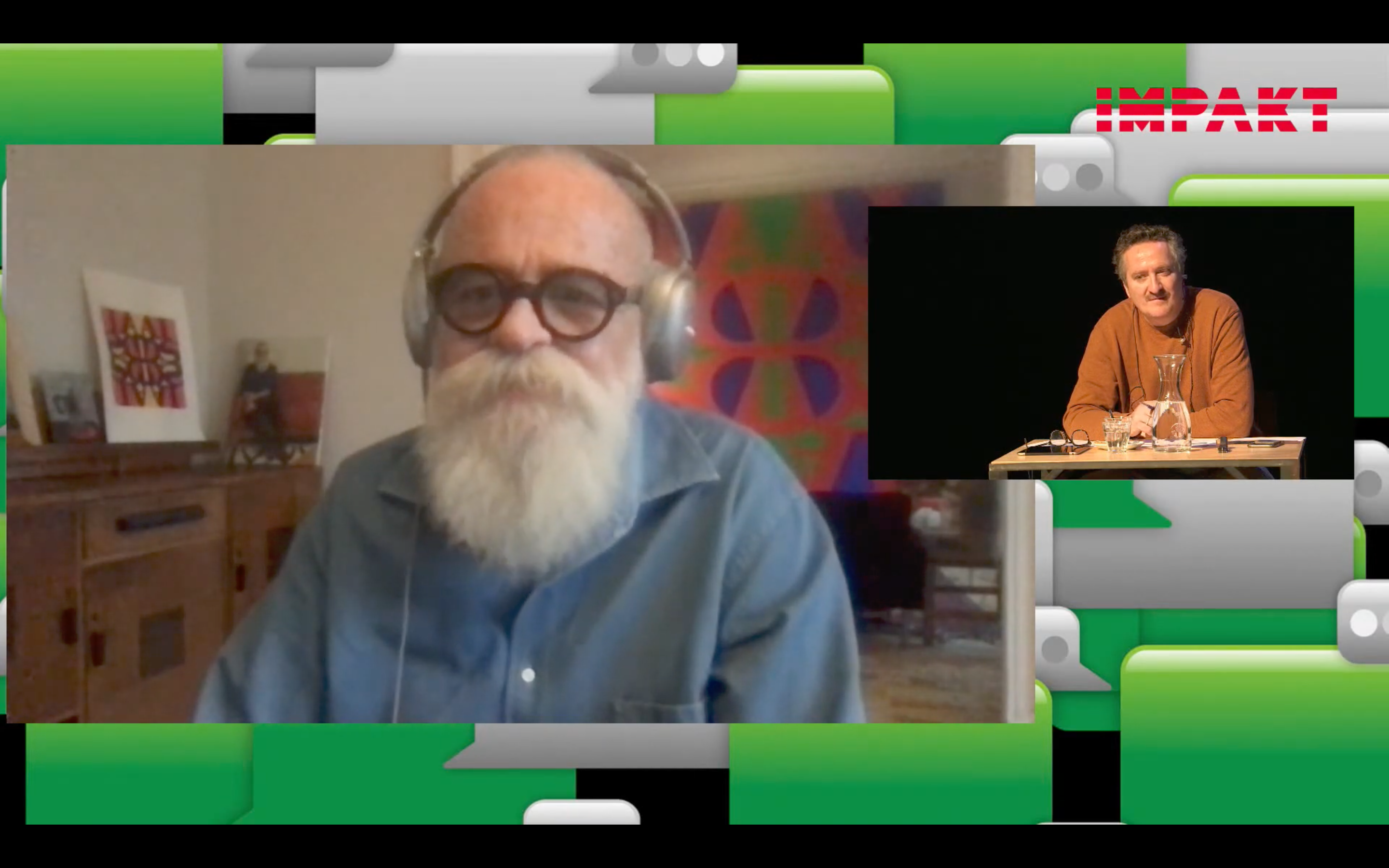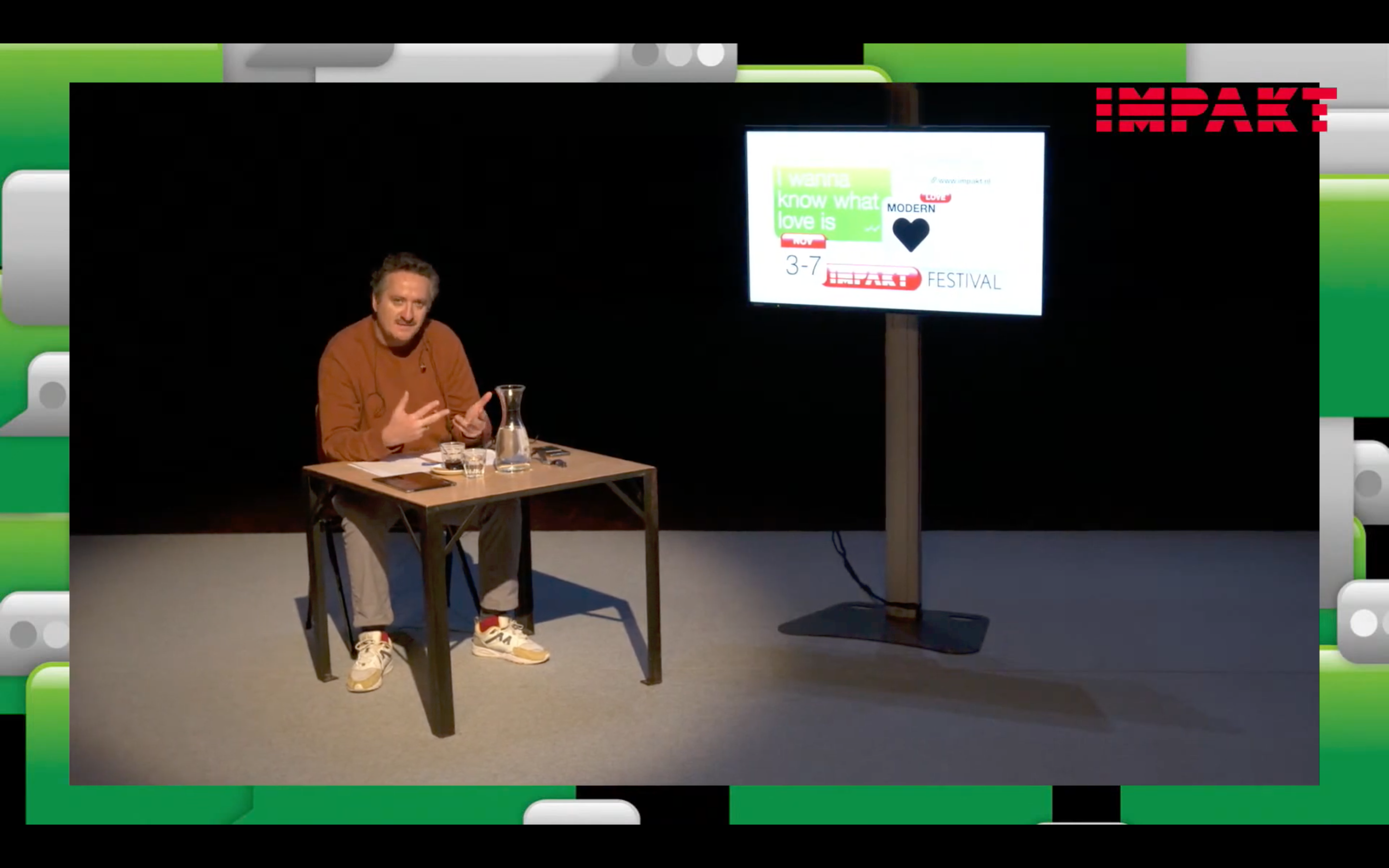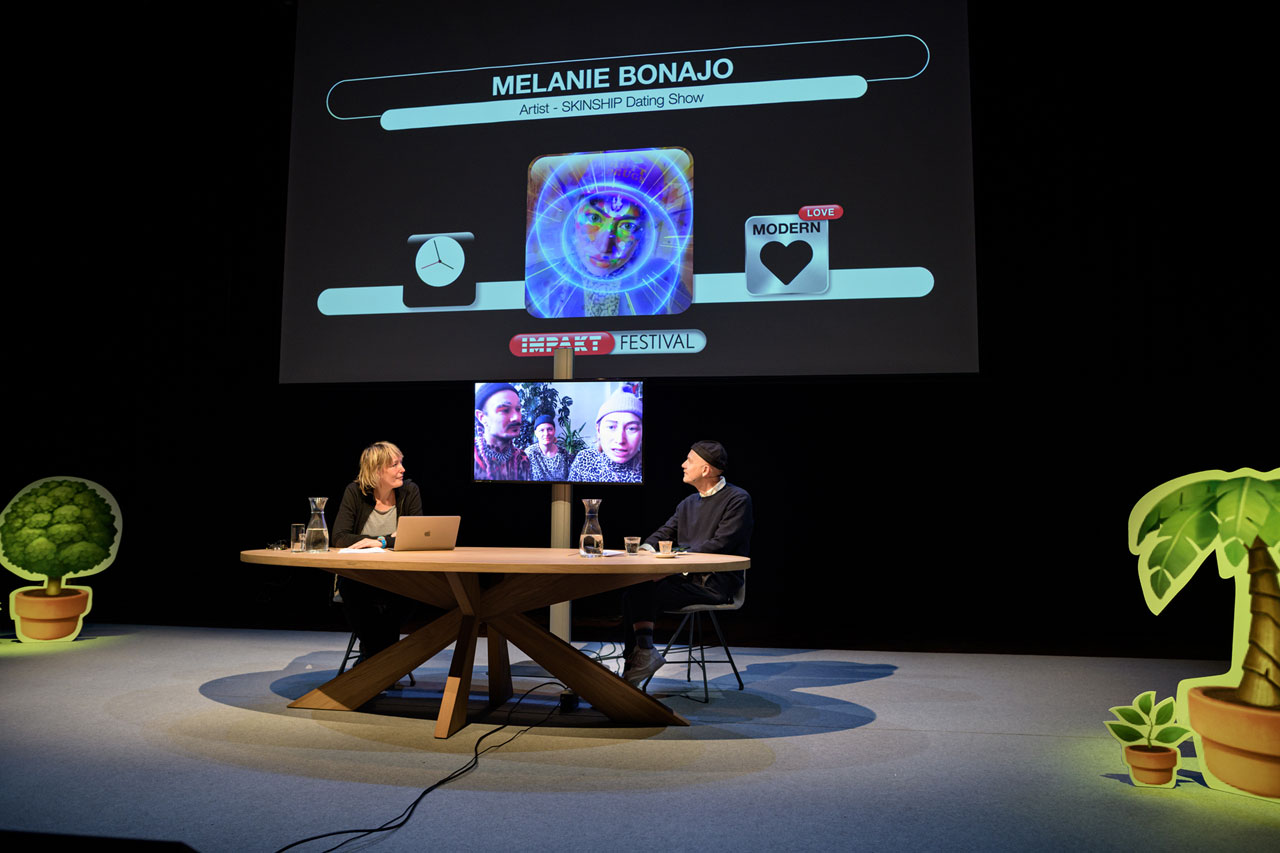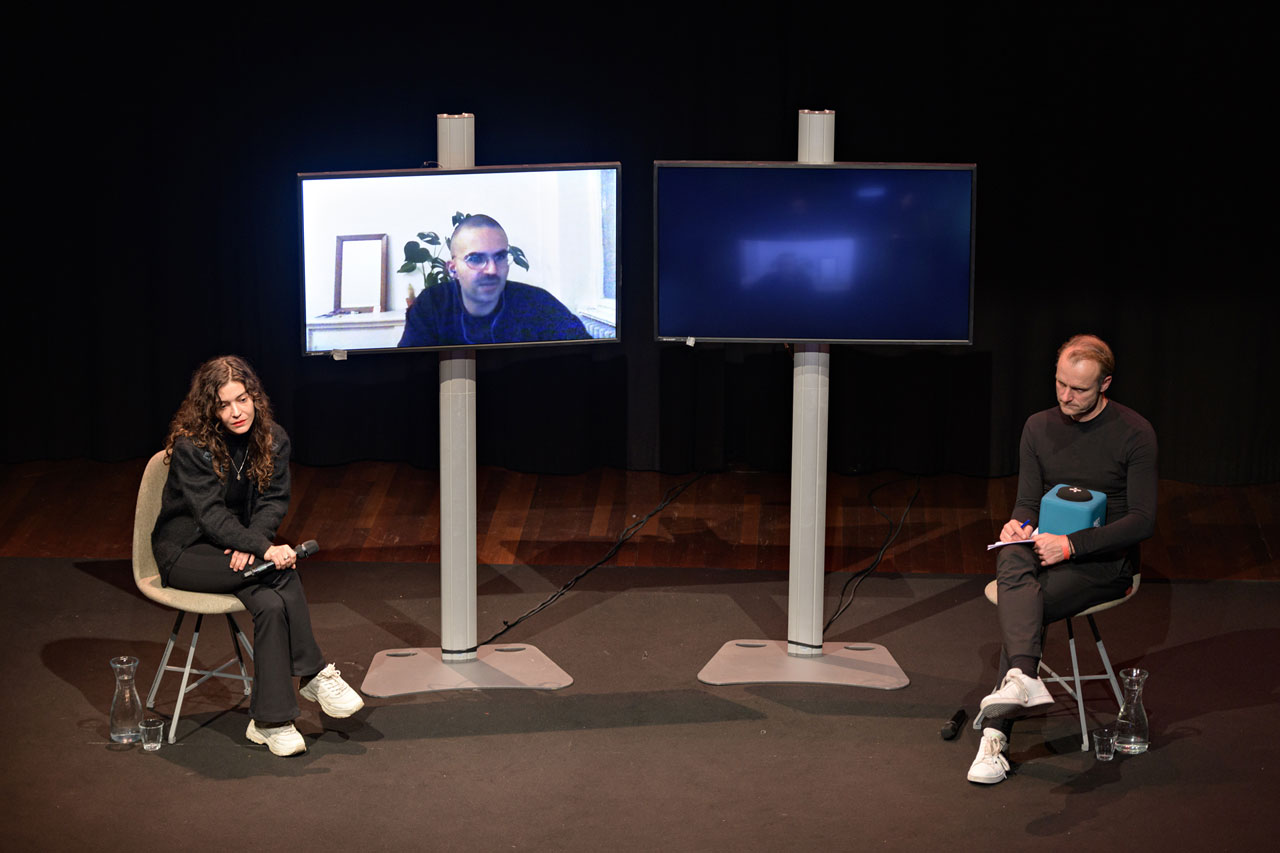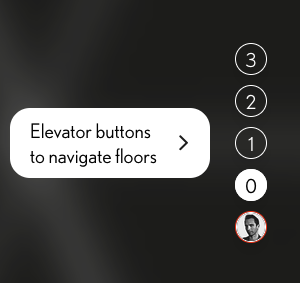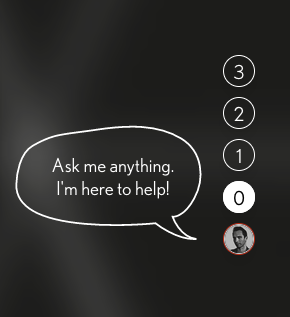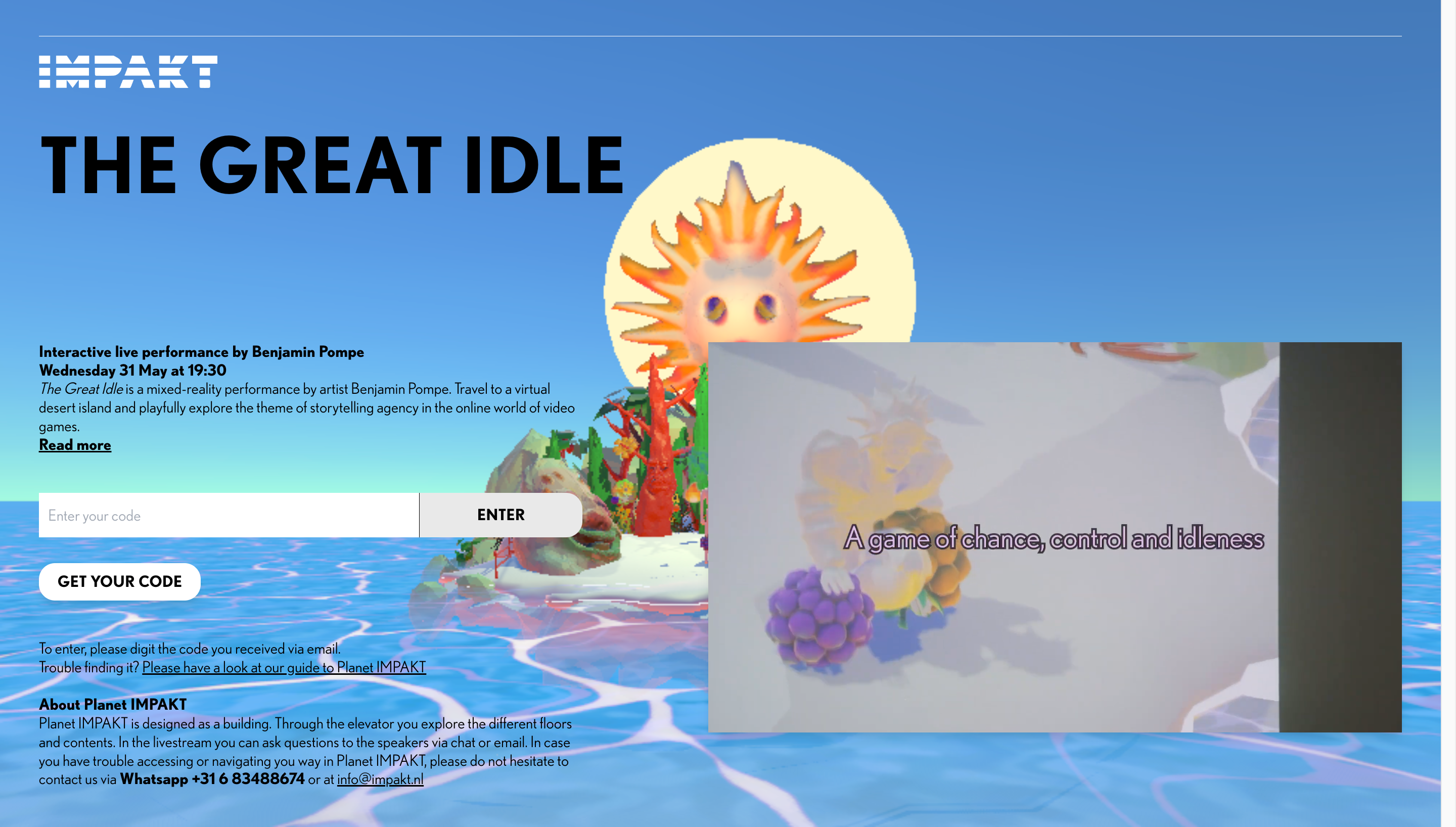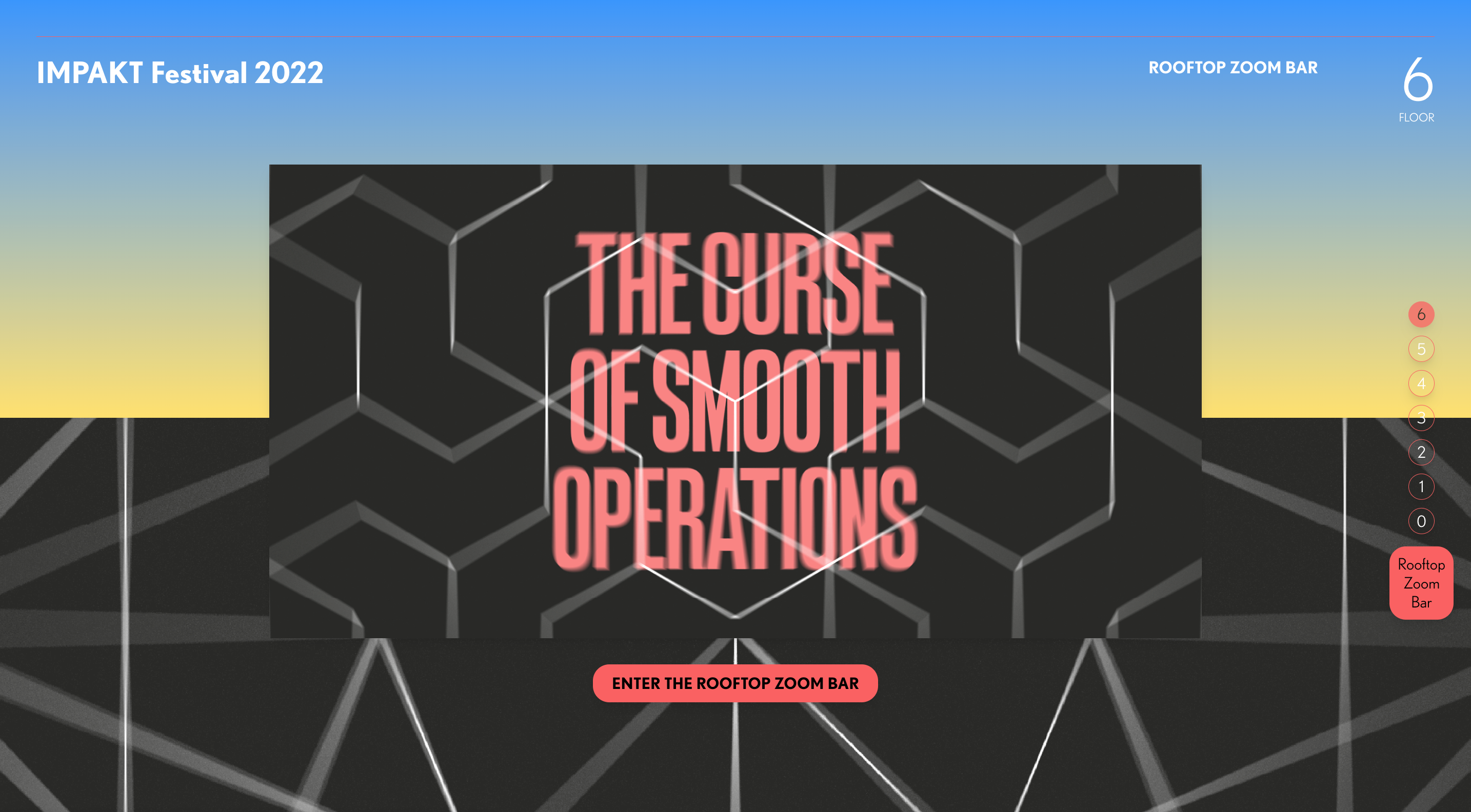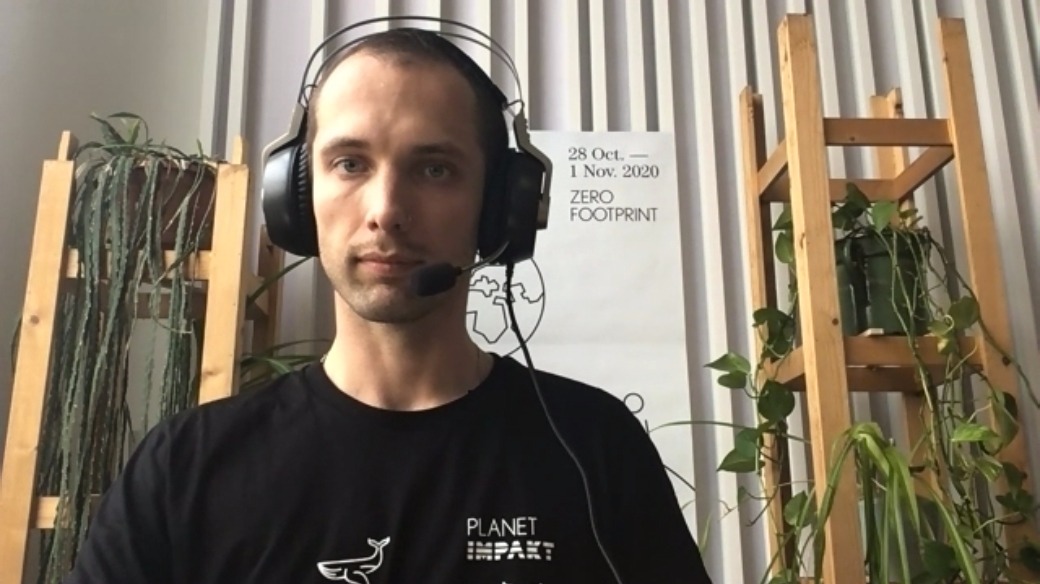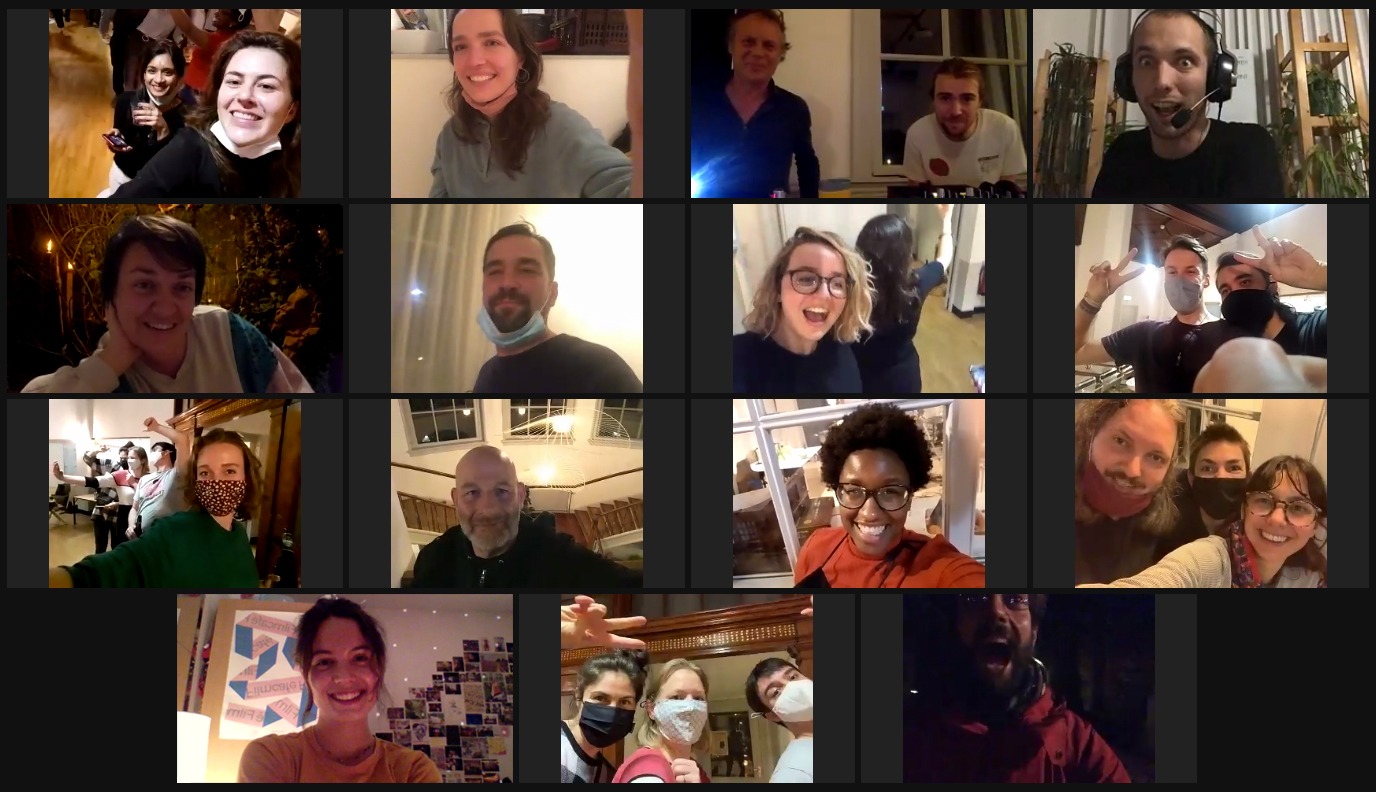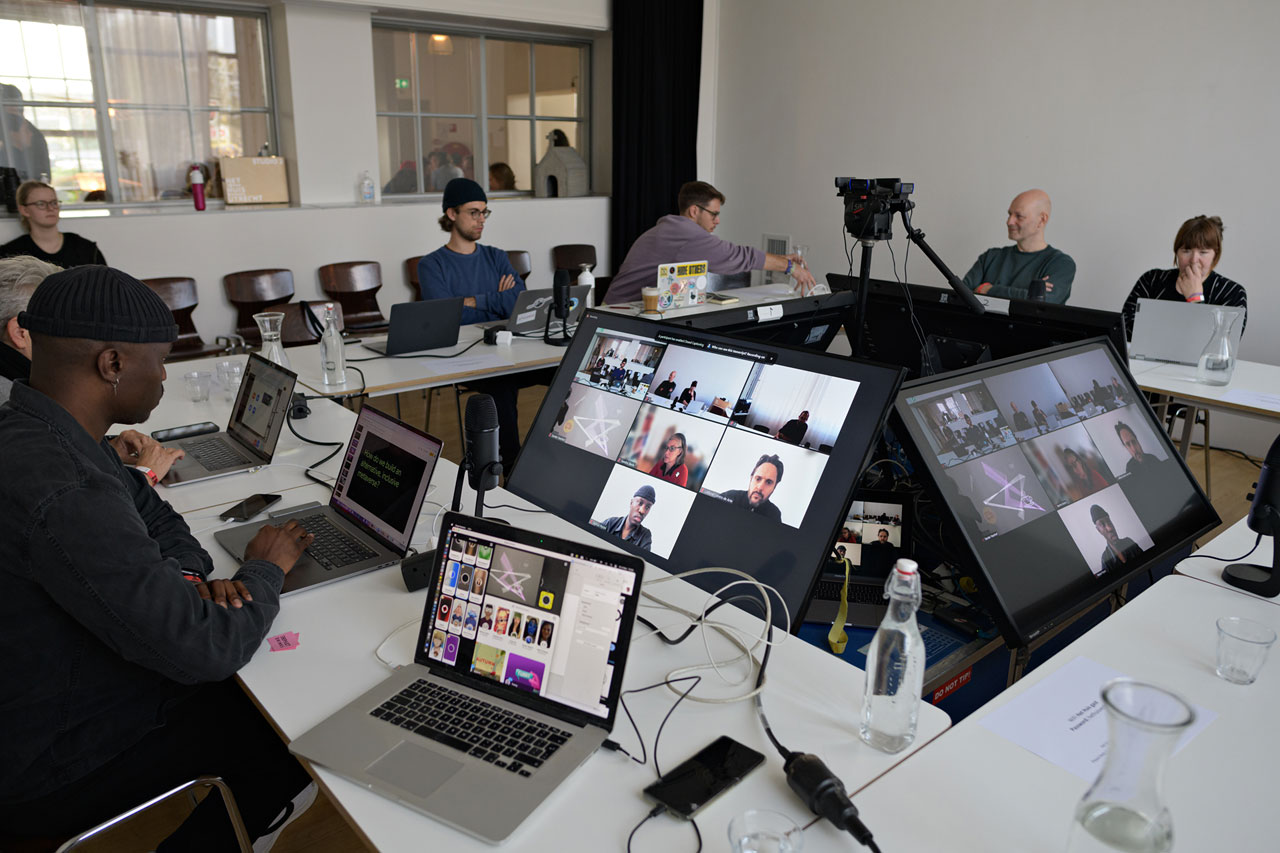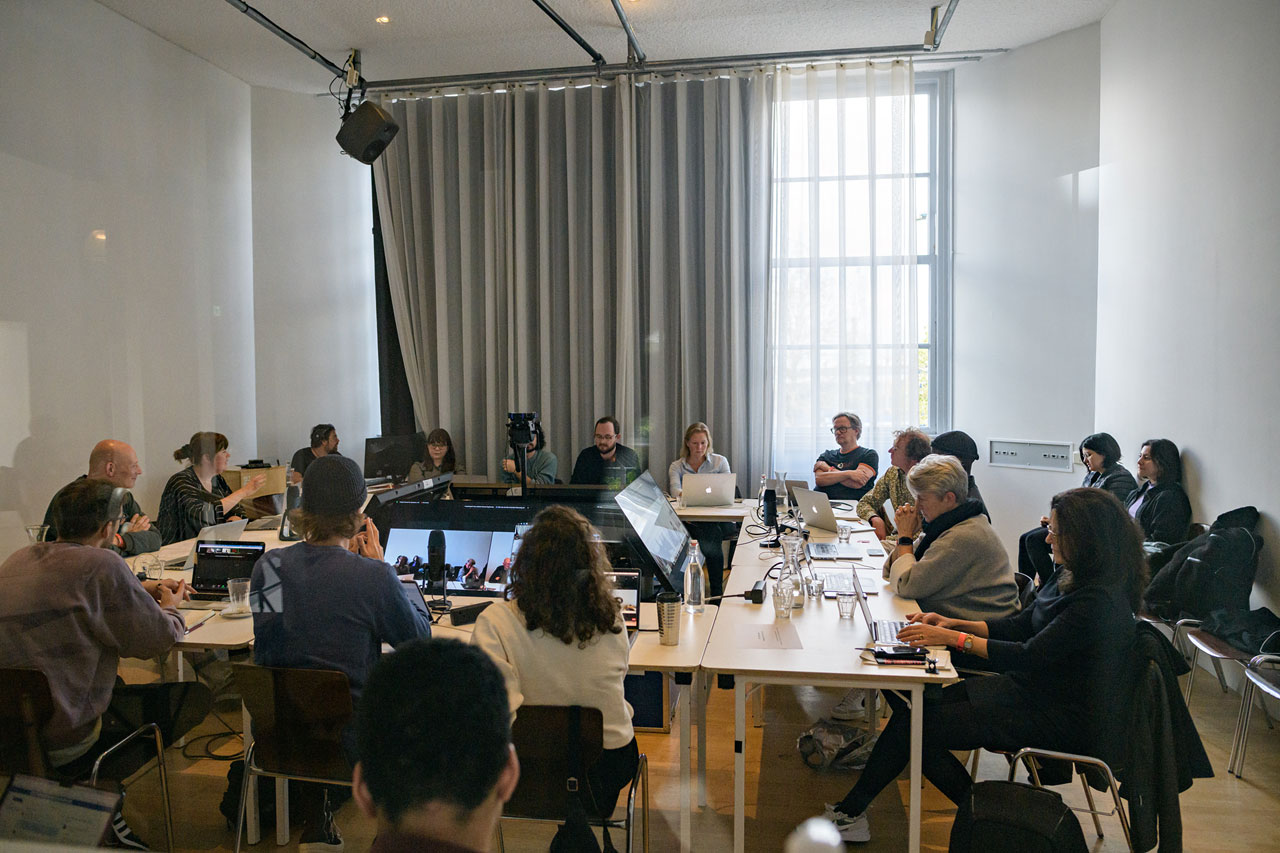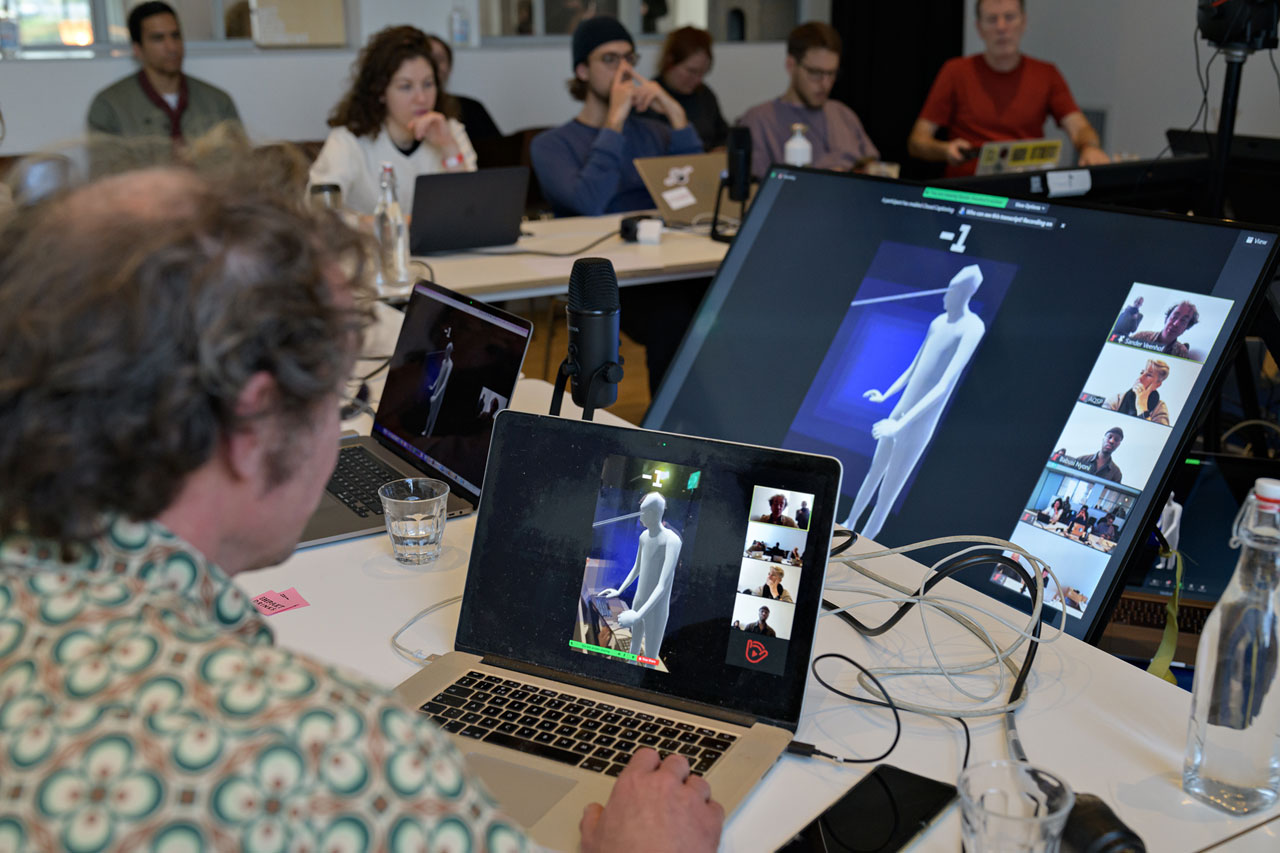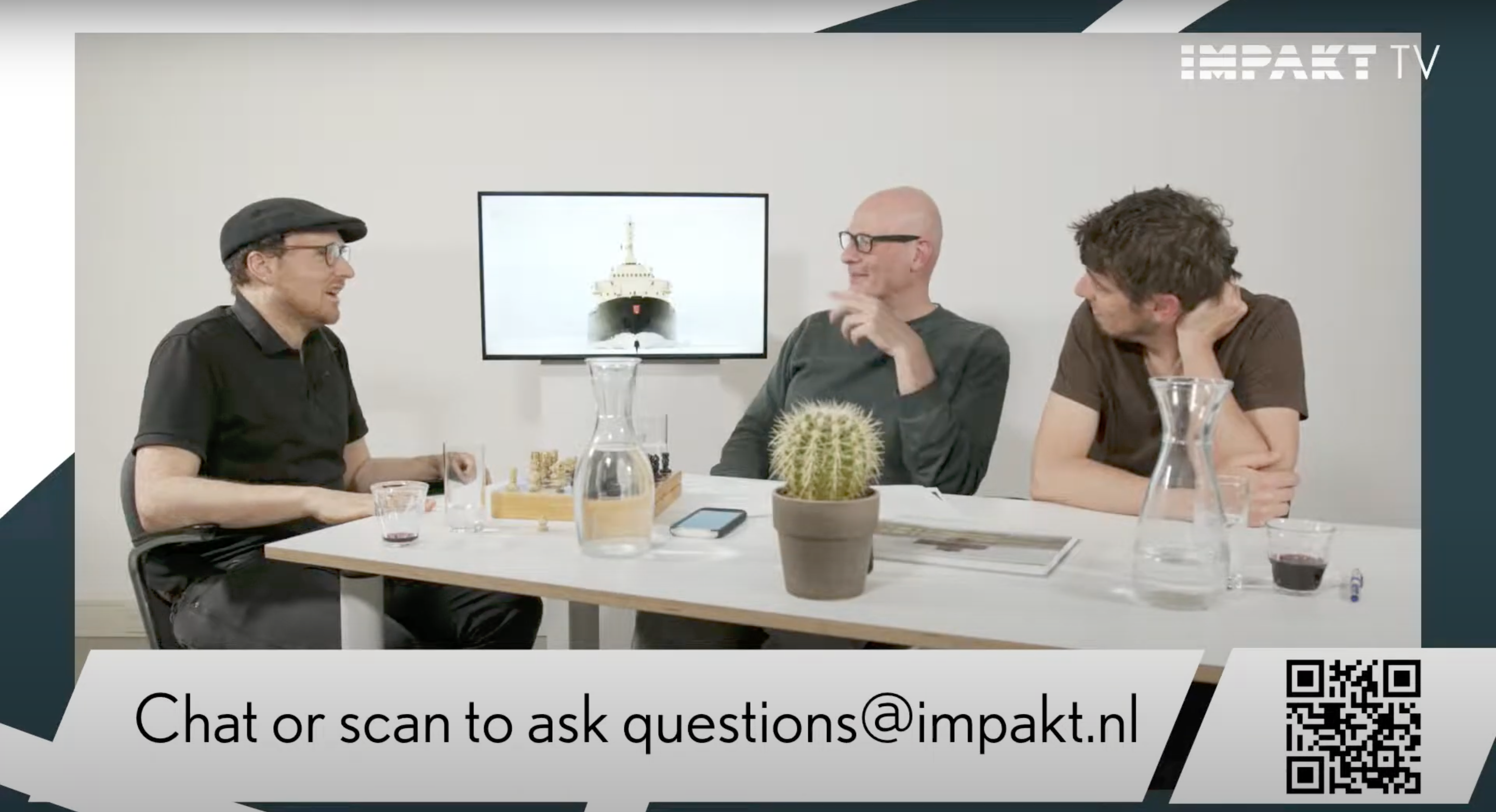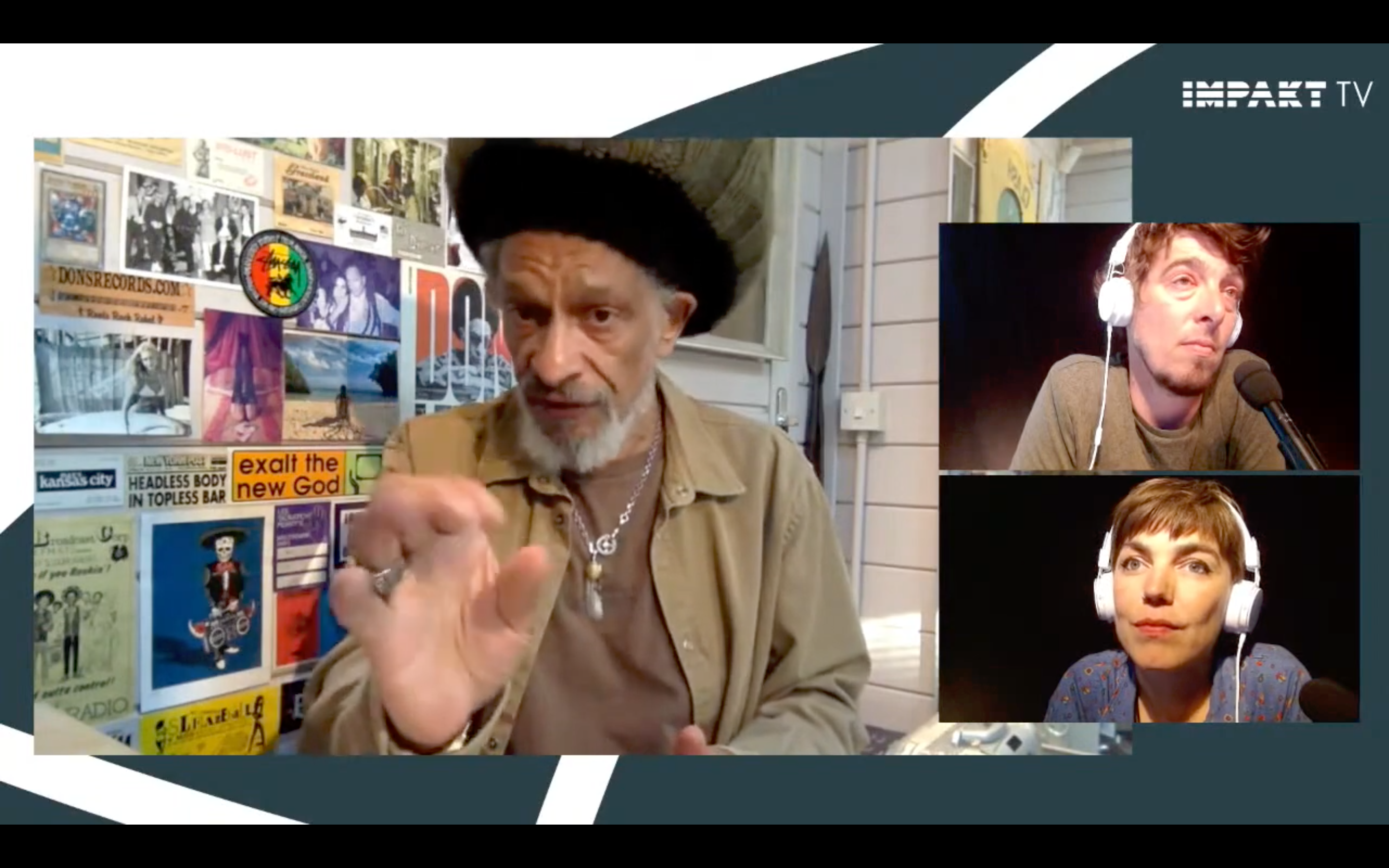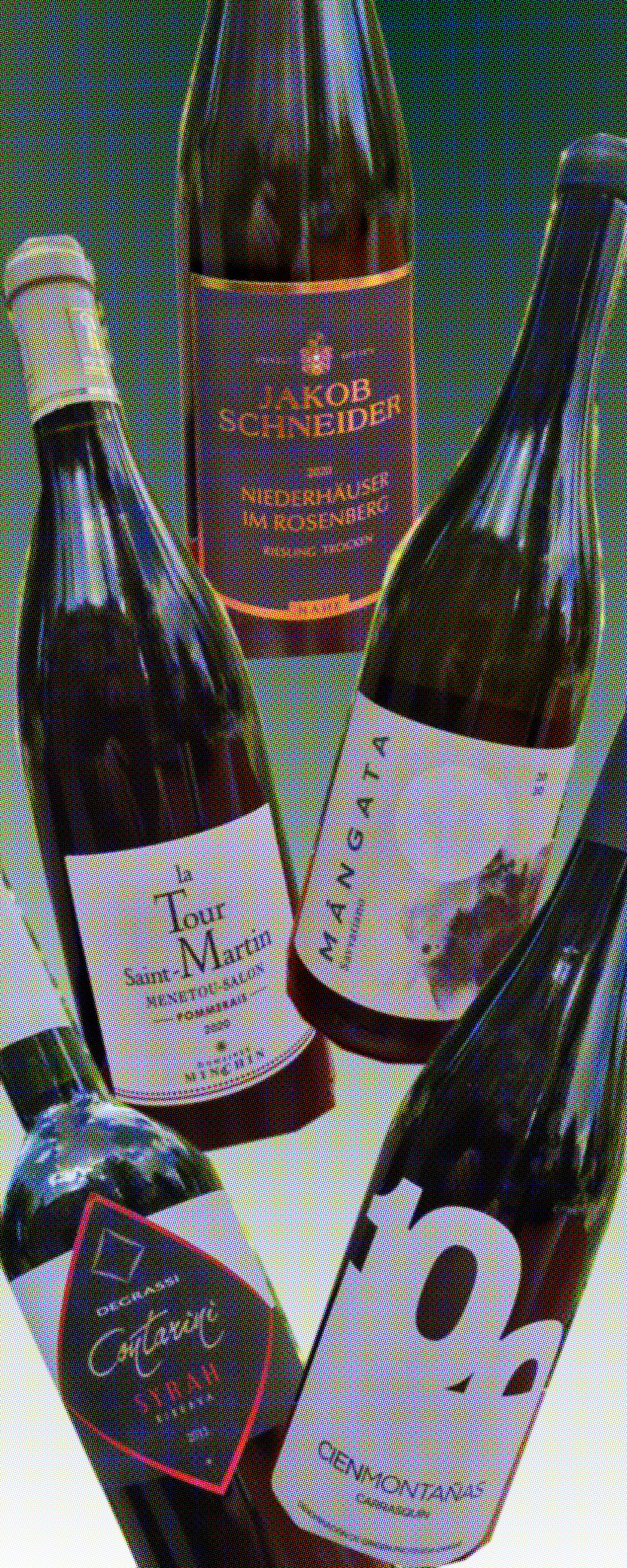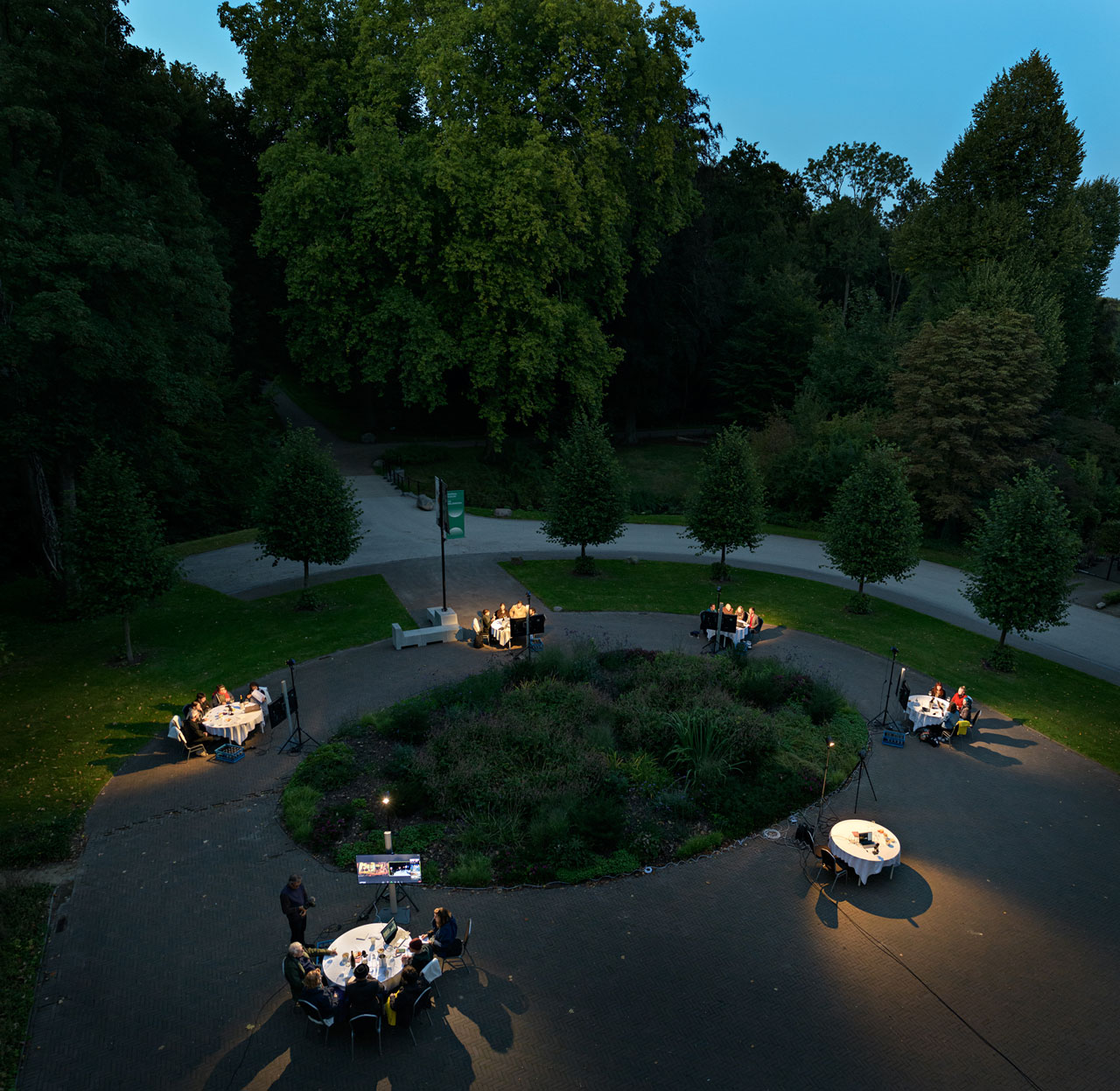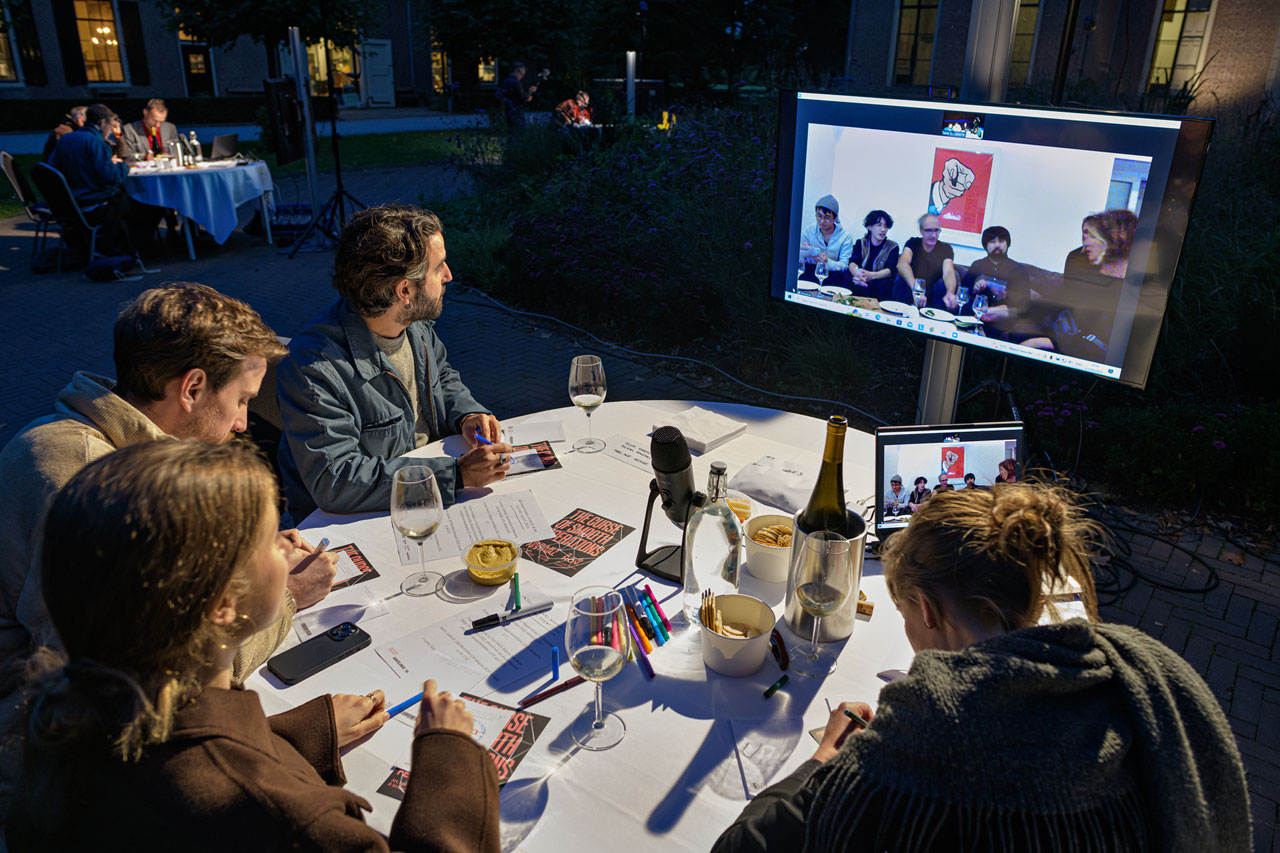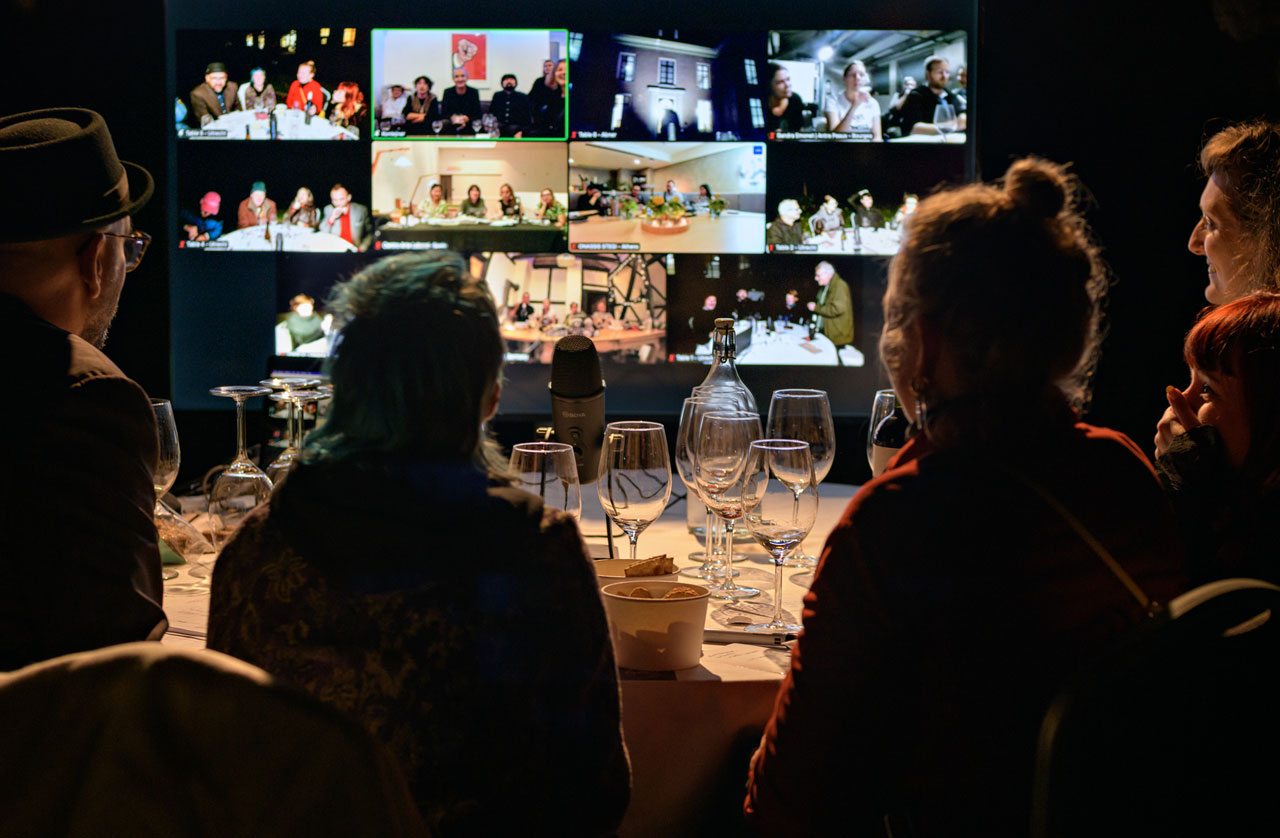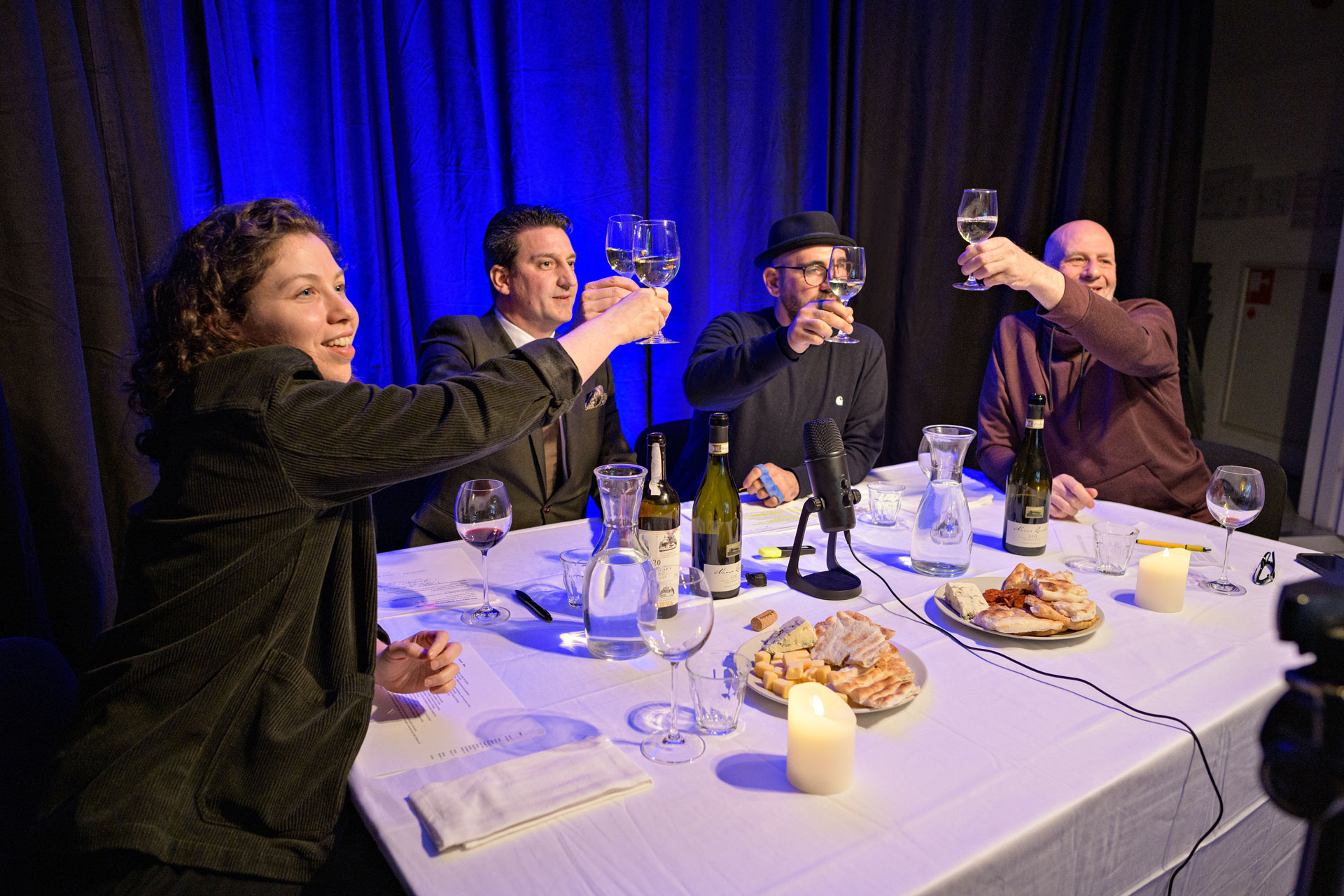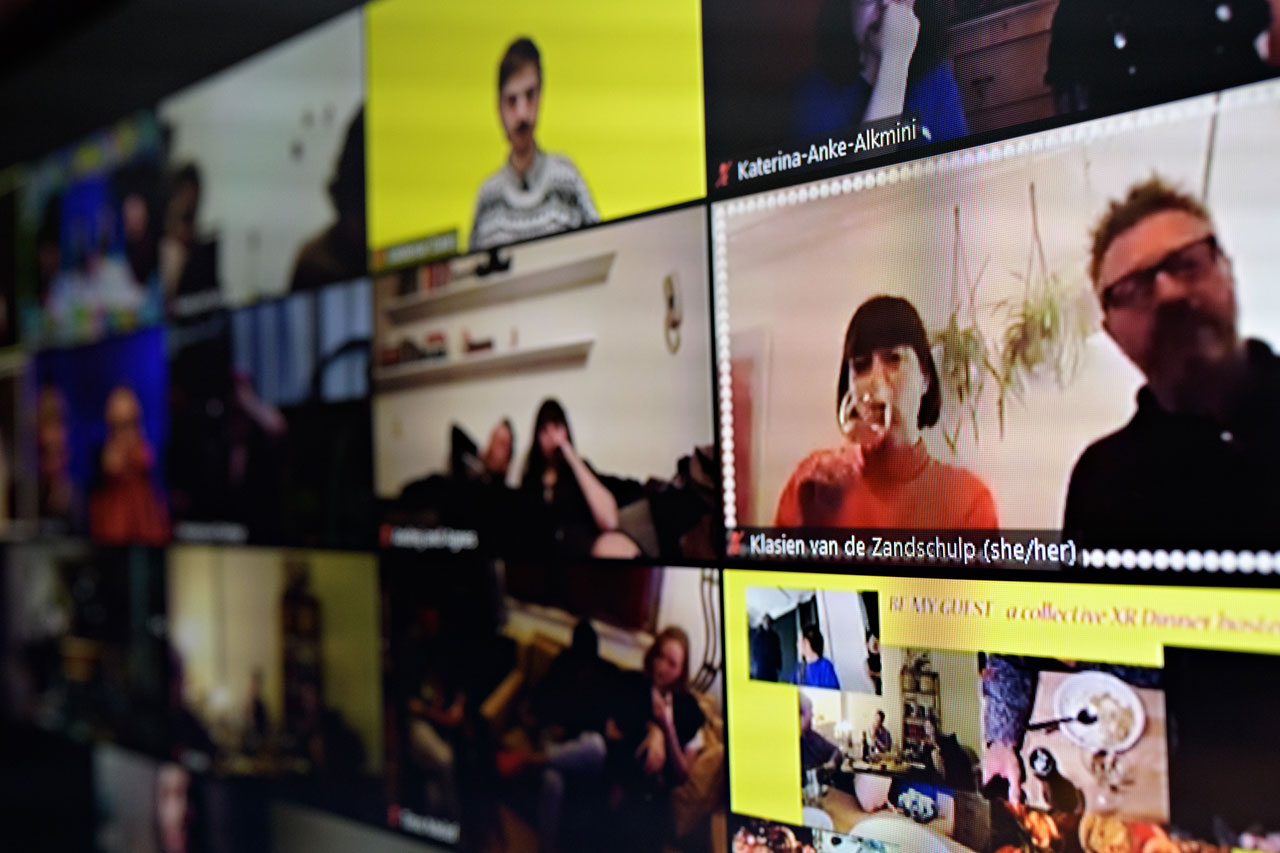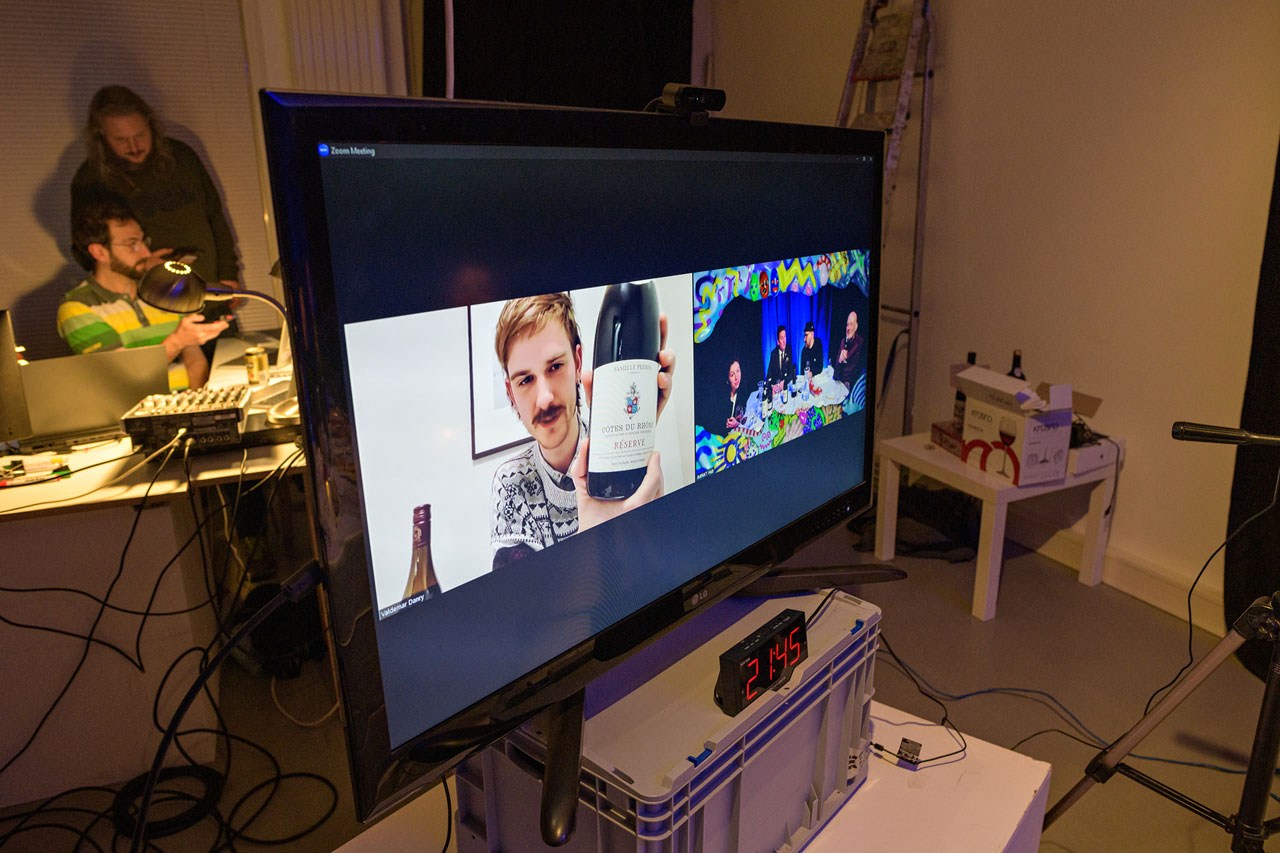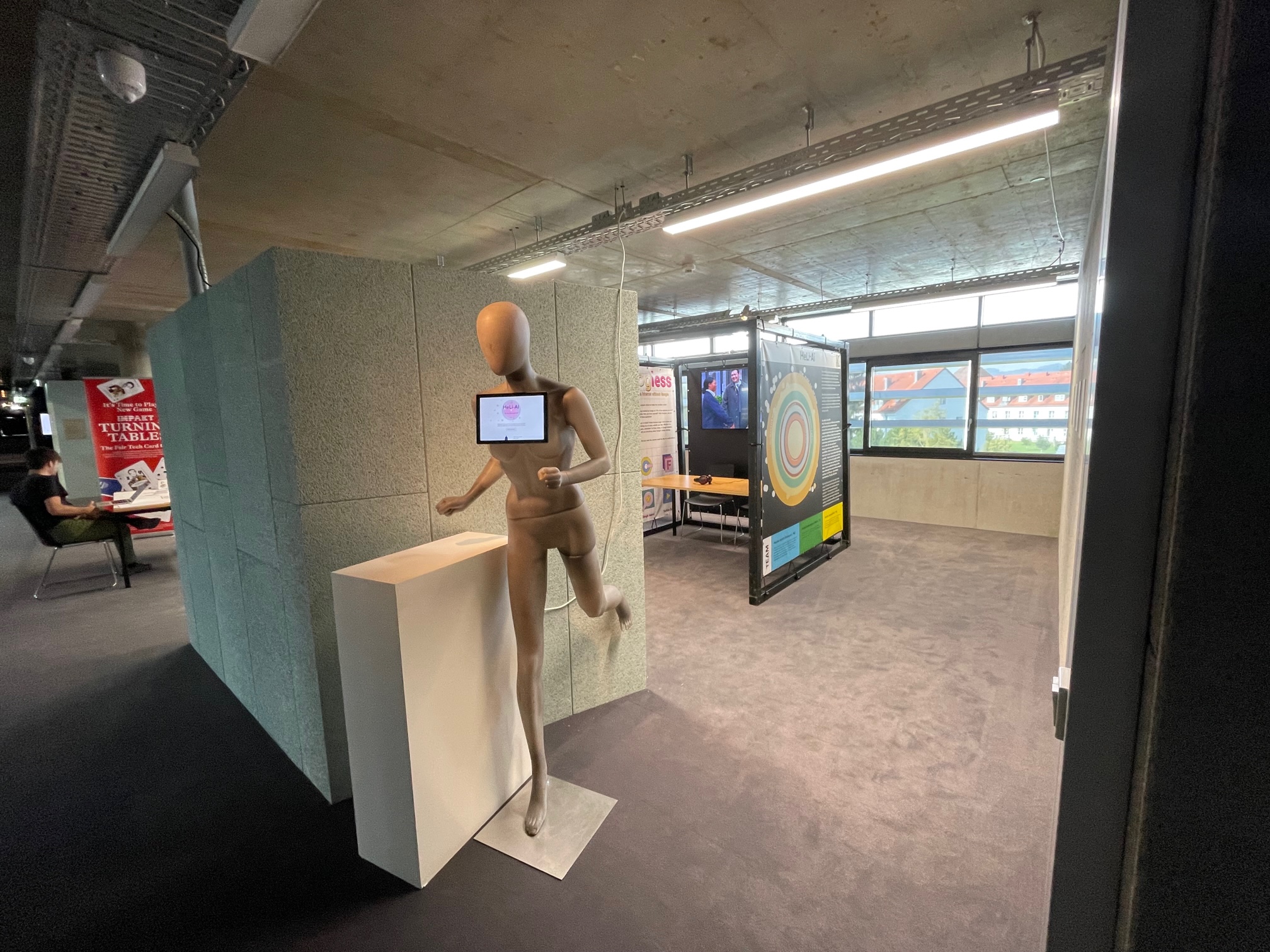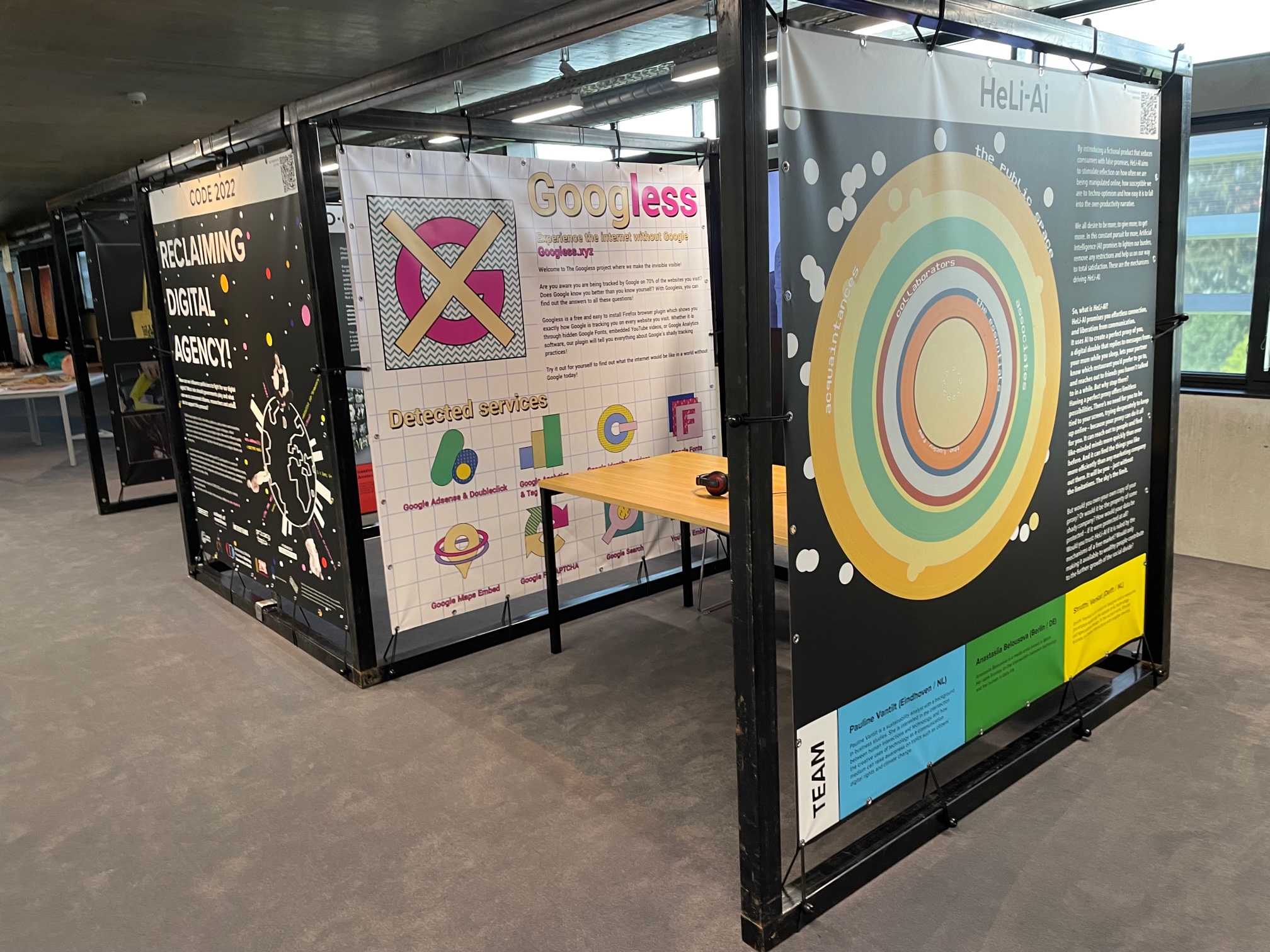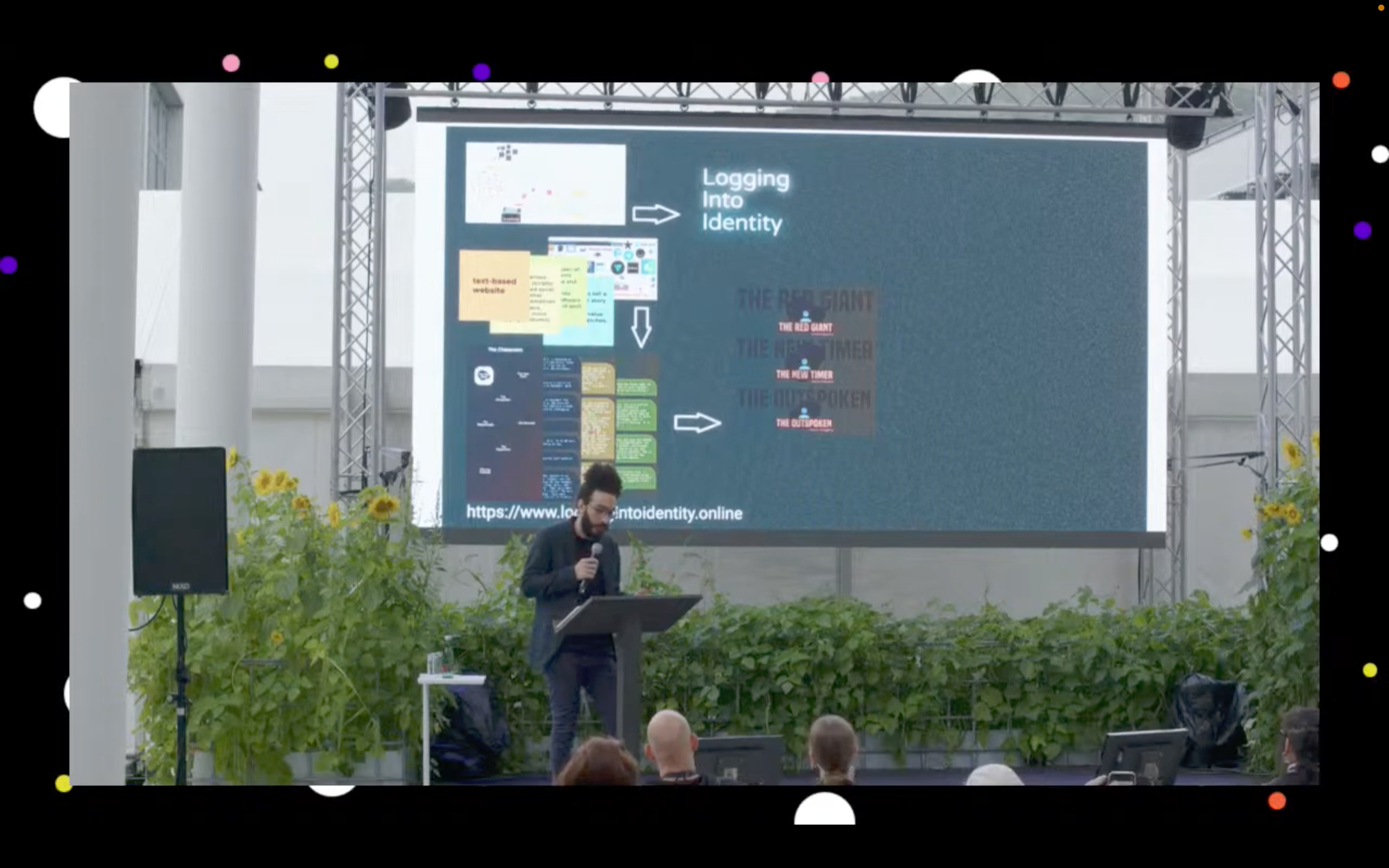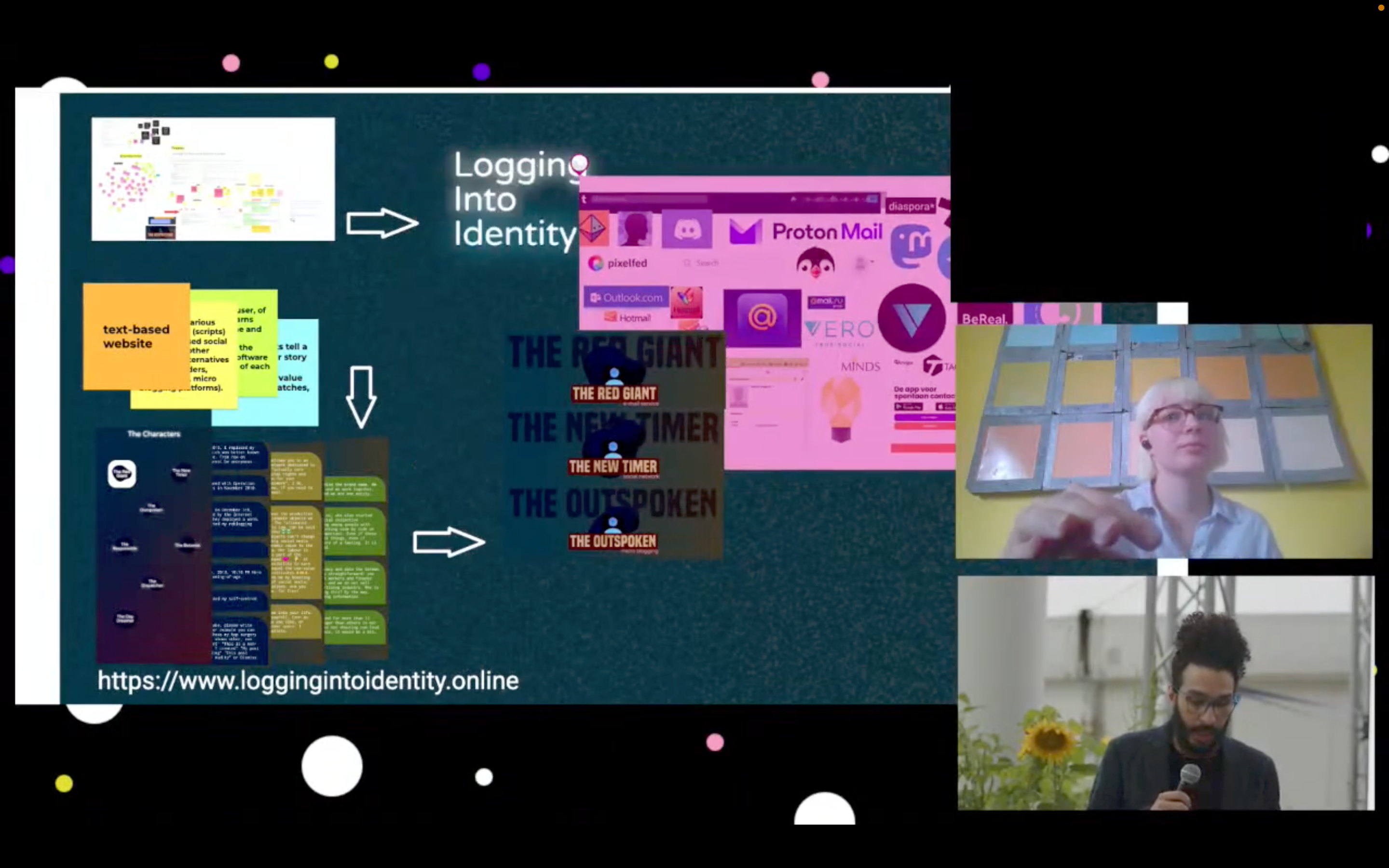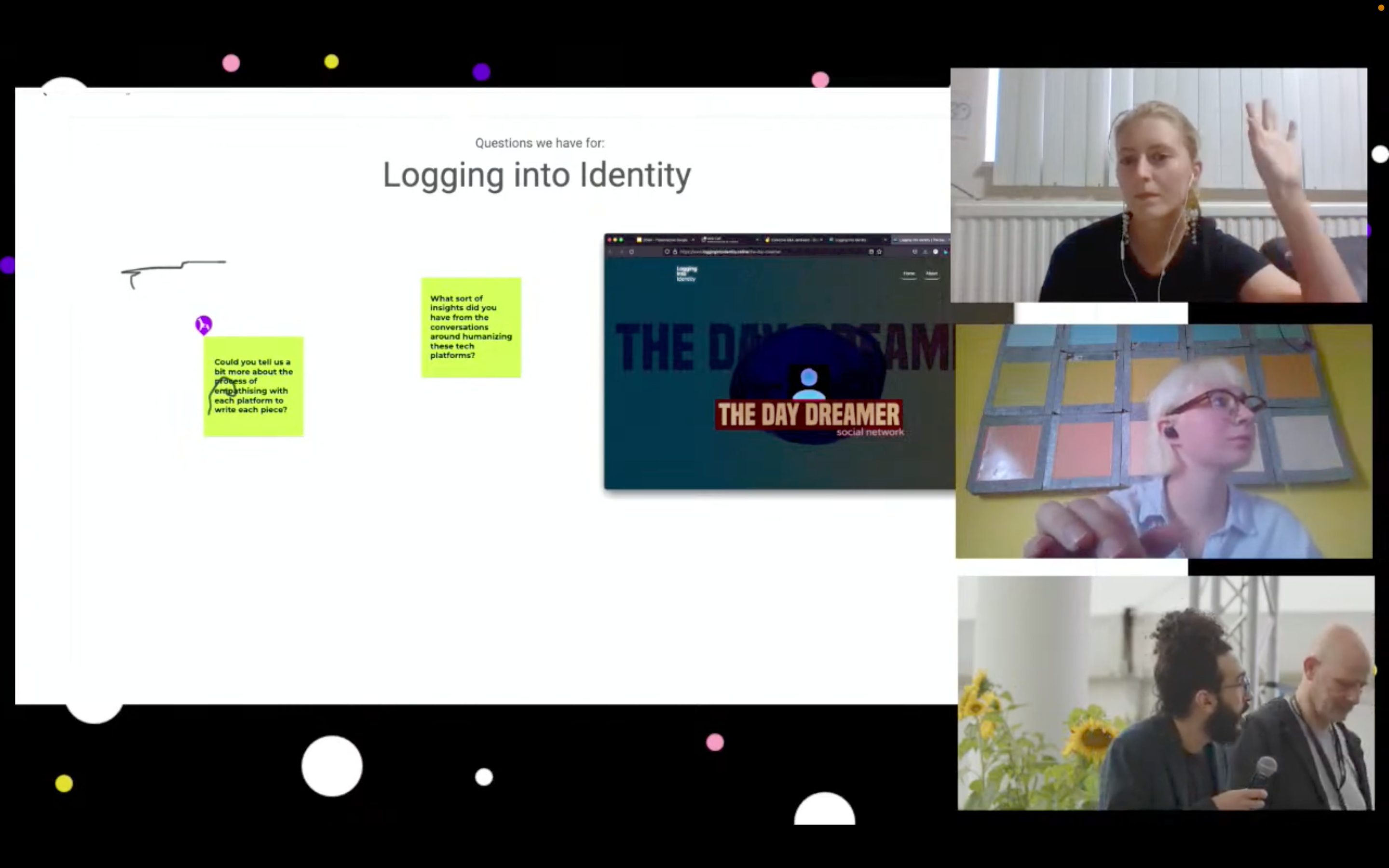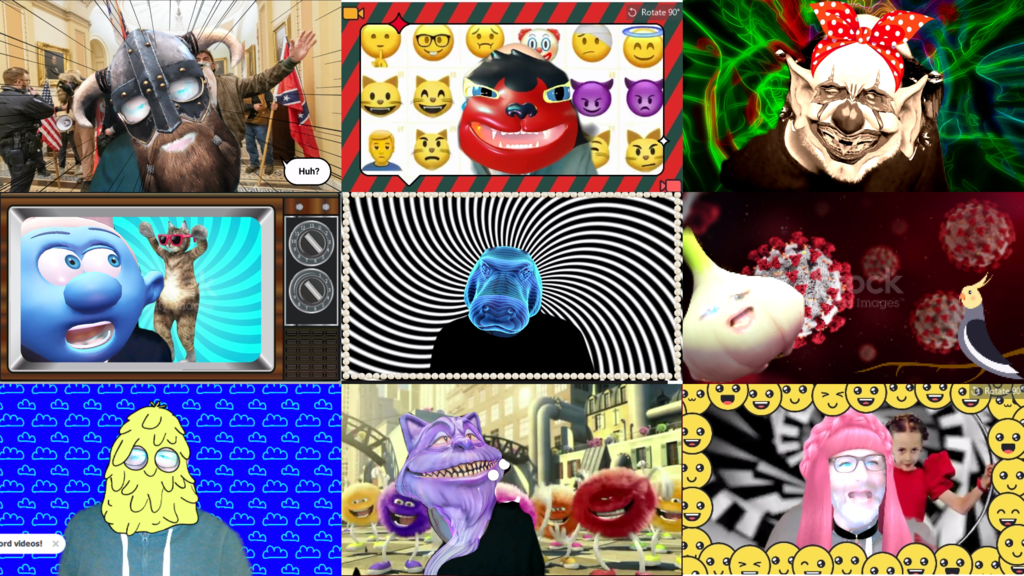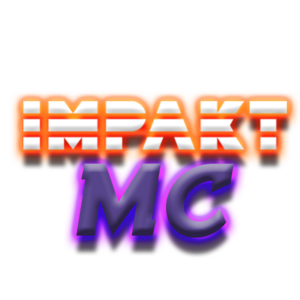IMPAKT Landing Page
IMPAKT Main Menu
| Main Menu | Principles | Our Case Studies |
|---|---|---|
|
IMPAKT Festival
IMPAKT Festival
The IMPAKT Festival is an annual event celebrating experimental films, emergent media, and critical perspectives that has taken place in different locations around Utrecht since 1988. Each year, the festival focuses on a different theme (e.g. Zero Footprint, 2020; Modern Love, 2021; Curse of Smooth Operations, 2022). Artists, politicians, and cultural critics come together to discuss new works and trending developments in global media culture. The COVID-19 lockdowns in 2020 necessitated the first-ever virtually-attended version of the festival.
Move to Online
The Dutch ministry of Health announced a lockdown (with enforced curfew and restrictions on attendance of in-person events) not even 2 weeks before the 2020 festival launch. As mentioned above, the theme of that year was Zero Footprint: Living and Connecting on a Damaged Earth. It was perhaps coincidental good luck that in keeping with the theme, IMPAKT had decided to minimise the number of speakers that would be flown-in to the festival internationally. As such, many of the international speakers were already due to join remotely, and the infrastructure to do so was already in place.
Move to Hybrid
Even so, transforming the event into its online iteration was a huge logistical and infrastructural undertaking. However, the experience has proved to be a worthwhile long-term investment, as since that time, the festival has continued to exist as a hybrid online-offline event. While the conversion to online came with a learning curve, introducing the dual nature of hybrid online-offline attendance comes with its own particularities.
The hybrid iteration of the past two years has sought to allow virtual and physical attendees to experience the festival to an equal quality. In large part this means making both physical and virtual attendees feel the larger context of what they are participating: that is, give physical guests access to online content, and provide holistic and reliable coverage to virtual attendees. Feeling the context is reliant in large part on the experience of liveness/simultaneity of access for both groups that creates a feeling of sharing in the same collective moment that events such a festival can occasion.
However, it is not just the audience members that participate in the festival hybrid– it has become common practice that speakers and performers also join the festival remotely. When they do so, we connect with them via private video links using the built-in calling system of the streaming software we use, VMix. This private connection offers more fine-tune control and feedback about the stability of the connection. Remote speakers have joined the main stage program of the festival in various configurations. Keynote speakers will typically present while being projected on the large screen in the main hall; if there is a Q&A portion, sometimes they will then be moved to a smaller screen so that the moderator can be looking at eye-level.
In a panel setting, we have standardised to give equal footing to all speakers: each remote speaker appears on a TV screen that is placed level with the speakers sat at the physical table. This also means that the overhead projector is free to be used for slides, or other presentation materials, by the speakers.
Keep it simple
There are many moving parts to the IMPAKT festival: the main stage panels, performances, talks, etc.; the screening programs; the professionals program; IMPAKT TV livestream; as well as all the various activities taking place throughout the building. It can be tempting with so many dimensions to fall into the trap of overcomplicating things.
Prioritising clear and solid infrastructure makes all the difference. We have found that the most important is to streamline the hybridity, and make everything accessible through the portal, so that this is the one place where online and offline meet. This makes it a consistent element that can be integrated as a digital asset in the changing on stage layouts, while remaining an easy-to-use gateway for the guest.
Cultivate Collectivity
The in-house audience is visible to the online audience at points of the program through the livestream camera angles. However, it is rare that the online audience can make their presence known. Providing panel/talk moderators with tablets that show the incoming questions from the online audience gives them a moment to intervene and engage with the program, just as much as an in-house attendee can with a handheld microphone.
Create Comfort
There are some less visible actors contributing to creating a hospitable, welcoming environment– namely, the Secret Online Moderator (SOM). This is a rotating role among IMPAKT festival workers that comprises welcoming online audience members into the chat, providing links and context for the talk, as well as moderating comments as needed. It is an important role that is essential to the maintenance of a safer space.
Contextualise
In-house attendees are more likely to spend longer amounts of time in one place. Online attendees are more likely to disconnect after a shorter amount of time. Part of this is feeling connected to the space and the context. Providing only an intermittent stream whether due to technical disruption, or opting for broadcasting only main stage programs, can be very jarring to an online audience. Providing a continuous and reliable stream allows audiences to stay in the rhythm of the festival.
Fair Tech
After testing several streaming options, our research found that building our own video player through Mux and embedding this into our own web portal provided the most smooth and reliable livestream. However, for clips from talks and panels, archiving the material on our Youtube still ensures for the widest reach to new audiences.
IMPAKT Web Portal
Planet IMPAKT
Check out Planet IMPAKT yourself using the link.
Planet IMPAKT is the web portal designed as the point of entry for all digital events organised by IMPAKT. The portal is usually passcode protected– codes can be provided upon purchase, or reservation of a ticket. On the one hand, this allows tickets to be sold (or at least kept track of, for events with limited attendance). On the other hand, it is also a centralized point of access that allows us to contextualize the event: talks with artists are supplemented by links to their website and examples of their work; panel discussions can be placed alongside commissions and other related projects.
The portal navigation is designed to mimic an elevator: The visitor enters on the ‘ground floor’, where the stream video player and chat box are. They are given the option to journey through the different floors (each of which holds additional information relating to the event). On the top floor they can find the rooftop bar: an embedded zoom call where they can meet with the bar host, Andrej, who is available to provide technical support, updated program information, or happy to just chat.
Recent changes to the portal saw the addition of a Help chatline: alongside the other elevator buttons, guests of Planet IMPAKT can click the button that announces (via a pop-up speech bubble) that "I'm here to help!". The chat pops out in a new window within the portal environment. The chat helpline is not a bot– someone manually responds to the messages that are received. As such, there is an automated message that announced when the chatline is in service.
A further development speaks to the desire to make online audience members more visible in the livestream/during events: each time a guest logs into Planet IMPAKT the background graphic of the portal is populated with an additional bubble. The bubbles are coloured in a range of hues, but otherwise unmarked. Each bubble represents the number of guests present in the portal.
The discussion of the portal design necessarily follows from design decisions made for the festival. I would recommend reading the section about the festival for more in depth info relating to that. However, the portal is also used to access other digital events throughout the year.
Keep it Simple
Planet IMPAKT is always the point of access for IMPAKT events. Before the development of the portal, events were streamed across various sites (Youtube etc). This lead to divided publics, and less interaction between attendees.
The simple design of the portal is also in service of streamlining the attention towards the live stream.
Cultivate Collectivity
Having digital and physical attendees pay attention simultaneously is what ensures an active discussion during the event and promotes a greater feeling of collectivity. The bubbles that represent each attendee in the portal provide a sense of the collective without distracting from the livestream, nor requiring heavy computer processing.
The additional materials that are available on the other levels of Planet IMPAKT provide contextualisation that would otherwise only be available by being in a physical space, such as an exhibition hall.
The Rooftop bar is a place for aftertalks, continuation of discussion past the allotted livestream time.
Create Comfort
The elevator design of the portal pages was a choice to mimic the experience of navigating a building as closely as possible. Using this kind of mimicry mirrors what an on-site guest would experience in the physical exhibition hall. Compartmentalising the information according to this elevator metaphor helps to contextualise the material.
Rooftop Bar
Rooftop Bar
The Rooftop Bar has been a mainstay of all the hybrid and online-only events that IMPAKT has hosted over the past 3 years. Andrej Kapor has been the bar host of the Rooftop Bar since its inception. The role of the host is to welcome guests who journey (or stumble) into the digital rooftop bar– a Zoom video call that is embedded into the IMPAKT web portal (on the top 'floor')– where guests can join and use as a casual meeting point for discussions, directions, or drink recommendations. Every IMPAKT TV ended in an invitation to continue the conversation in the rooftop bar after the livestream ended.
Make it participatory
Having a chatty bar host lowers the threshold for participation. While the chat box, or holding a microphone may be daunting for some attendees, the casual conversation in the rooftop bar can lessen the barrier for joining in.
Cultivate Collectivity
Part of feeling like you can join into a conversation is knowing who you are talking with. Giving people the option to be visible and to speak face to face– regardless of location.
Create Comfort
One of the main functions of the bar host is to provide guidance, technical support, but also (most importantly) simply a welcoming face that is available to chat with. In our physical spaces, people are always welcoming and eager to chat, and this is something that needs to be consciously recreated in online spaces.
Contextualise
During the aftertalks in the Rooftop Bar everyone has the space to share their opinions. We have found that the people who join our events are the type to be well-versed in the topics being dealt with, and eager to discuss. Having a meeting point where people can have informal discussions also allows people to create personal connections to the events and discussions of the program.
Professionals Programme (2022)
Hybrid Formats: Professionals Programme (2022)
“Hybrid Formats” was an information session held as part of the Professionals Program during the 2022 IMPAKT Festival. In this collaborative session, IMPAKT showcased the steps we have made towards developing successful hybrid formats and focus on the knowledge of different artists who have worked on and with hybrid formats. For this discussion, the focus was on the technical, sociological and psychological aspects of hybridity.
This session consisted of a workshop where we, together with artists from our hybrid experiments and our professional audience, built a glossary for hybrid events, including (but not limited to) format suggestions, interesting readings, different softwares to use, etc. During the discussion about the glossary, the artists gave their input based on the projects they are working on and share from their experience.
Of course, this Professionals Programme session was itself a hybrid format. Participants of the session were able to attend physically in Utrecht during the festival, as well as join remotely via video call. The physical set up in Utrecht consisted of four tables placed in a square formation, with chairs placed on the outside perimeter all facing each other. Four TV screens were placed sunken-in at the centre of the square of tables so that the physical attendees were all able to see the screens. These screens were used to display the shared presentation materials as well as the shared video call. Each participant was also able to use their own laptop to join the chat, or shared digital documentation spaces. (See pictures.)
This Capacity Building Workshop is organised by IMPAKT within the context of the European Media Art Platform (EMAP), co-funded by the European Union’s Creative Europe Programme.
Make it Participatory
The session was a collaborative information session– as such everyone was both a speaker and a listener. The technical set up was built with this intensely participatory structure in mind.
Cultivate Collectivity
Being able to see everyone, and providing everyone access to the chat at all times meant that everyone could feel the energy of the collaborative writing process.
IMPAKT TV
IMPAKT TV
IMPAKT TV is a series of monthly online livestreams in which we reflect on the most striking events in art, technology and media of the past weeks. Every first Thursday of the month, together with an artist, journalist, researcher or writer we discuss their work, latest news and must-see exhibitions and events. The video series is streamed live from the IMPAKT office studio through MUX directly into the portal and then archived on Youtube.
The series reflects on IMPAKT’s signature themes such as the complexity of our data driven world, our rights as digital citizens, how power structures are reflected in media and technology, conspiracy theories, meme culture, new approaches to climate change, and much more. With IMPAKT TV we take these discussions out of their theoretical comfort-zone and relate them directly to what we see around us, what we read in the news and scroll through on Instagram.
The chat is active throughout the livestream, available for people to comment, or submit their questions for the guest of the episode. These questions are collected by the hosts of the show and asked to the guest at the final Q&A portion of the show. Everyone– speakers, hosts, and audience– are invited to meet in the rooftop bar at the end of the livestream.
During the festival, IMPAKT TV runs continuously in the livestream in between main stage programs. Between programs, online viewers can see interviews with artists, curators and journalists, and stay in the festival flow– providing the same kind of continuous programming that a guest at the physical location in Utrecht experiences.
Keep it simple
The topics covered in IMPAKT TV are wide-ranging. To keep it cohesive, we opted to maintain a consistent structure to the interviews. In the first part of each episode we ask our guests to introduce us to the work they do and to reflect on their own practice. In the second part we discuss a selection of headlines and recent news items. The items are chosen by the IMPAKT TV editorial team, keeping in mind the expertises and interests of the guests. Finally, in the third part of the show, we ask our guests to give us a tip for the weekend: which exhibition, film, book or event we should not miss?
Within this framework there is a lot of ground that can be covered, but the consistency allows viewers to know what to expect from the series as a whole. Furthermore, they always know where to tune in, and where the archival material can be accessed.
Create Comfort
Despite the complexity of the topics covered in the series, the editorial team always strives to introduce guests and major theoretical concepts in a way that makes them accessible to the audience.
Unlike many of the events organised by IMPAKT, the livestream is one occasion where the audience has a more spectatorial role. People can tune in with no pressure. Nevertheless, the audience is encouraged to engage: the chat is available to write questions or comments, and we have also made ‘phoning in’ through video/voice call an option. However, we have found in the past audience members prefer to opt for the lower-visibility chat options when posing their questions.
Contextualise
Making the series part of the monthly program at IMPAKT allowed it to gain a loyal following of viewers.
Fair Tech Choices
Before streaming directly in our own web portal and using MUX, there were two major concerns with live streaming. Reliability and control over content. As we held interviews with artists and often showed their work we needed to ensure algorithmic censorship did not affect the quality and reliability of the stream– there have been times when some of the works were flagged for censorship and threatened to ban our streaming privileges. In addition to this, there were also technical difficulties that made live streaming through our own portal and video player the more sensible choice.
Wine tasting
Hybrid Art and Wine Tasting
At IMPAKT we like wine. And we like art. While people can find sharing their opinions about art daunting, the beauty of wine is that even without expertise you can taste and form an opinion. Drinking wine is a social activity that engages your senses. In the Wine Tasting events we wanted to take this as the starting point for an event that would bridge geographic, as well as cultural divides. There have now been two iterations of the International Hybrid Wine Tasting (IHWT) events– both very different from one another. However, in both editions, guests created cozy ‘table’ settings with their friends (either locally in Utrecht, or their own home) and connected at random to other remote tables via video calls. Attendees were invited to order wines pre-selected by our sommelier, so everyone was tasting the same wines. And art performances broke up rounds of wine tastings and provided fruitful topics of conversation.
The two variations were quite different from one another, but follow from an iterative design process. For this reason, a brief description of, and the differences between, each iteration are detailed below.
International Hybrid Wine Tasting (1.0)
The first edition of the International Hybrid Wine Tasting was conceptualized as a speed-dating, wine-tasting, garden party. The aim was to connect tables in Utrecht (which were open to the public through ticket sales) to tables set up throughout Europe at our partner institutions: Antre Peaux in France; Werkleitz in Germany; Onassis Stegi in Greece; Kontejner in Croatia; and Laboral in Spain. Each table had at least 5 guests sitting together, who were then able to chat freely to the guests sitting virtually across from them at a partner table. The event was hosted on Zoom and divided into five rounds, each round we would try a new wine. The wines were selected by five partner institutions. The 3 hour event is divided into five rounds, one wine to try in each round.
In the garden of the historic Oud Amelisseweerd estate, located just outside of Utrecht, we set up five tables each equipped with their own video-calling set-up. Identical tables were built around Europe by our partner institutions. In total, there were ten tables that joined a collective Zoom call (5 in Utrecht, 5 over Europe). Each round began in a collective setting where all the tables were visible to each other– this provided a moment in which the wine would be introduced by the institution that chose it. Thereafter, each table in Utrecht was paired with one of the partner tables; these pairings would switch after each round.
During these rounds of break-out rooms, guests were invited to do two things. Firstly, they were invited to try the wine. But they were also given a game to play across the digital divide with the table they were paired with. These games were themed around one of the five senses.
Lessons Learned
Following the success of the first wine tasting, there were some identifiable goals we had for the second iteration. Firstly, we aimed to make it more accessible to the public: although the first version was open to the public, those tickets were limited. Secondly, we aimed to create a version of the event that we could replicate in the future. The Oud Amelisseweerd location was beautiful, but it was also a large productional undertaking to transform into a hybrid hub of operations. The aim for the second tasting was to design an event that could match in ambience but requiring less time/resources to produce. And lastly, the new events needed to have more opportunities to showcase (hybrid) media art in this unique event environment.
Hybrid Wine and Art Tasting Event (2.0)
Version two, renamed the Hybrid Wine and Art Tasting, asked guests to invite their friends over to their houses, and turn their own living rooms into hubs. Each of these physical hubs would in turn become one of the webcams to be connected to other living rooms in the roulette rounds. As in the last iteration, wines were selected by our sommelier to be tasted in each round. However, this time, the selection was limited to three rounds. The selected wines were available for guests to order, so that everyone attending could share their experience of tasting the same wines. The first round was a white wine; the second, a red wine; and for the final round guests were asked to pick their own wine, which they could then describe to their virtual interlocutors.
We still set up a central hub in Utrecht, at the IMPAKT office, that acted as both the technical operational center for the event, as well as the podium for the evening’s Master of Ceremony. The MC table in Utrecht seated Abner Preis (the evening’s MC), Arjon Dunnewind (Director of IMPAKT), Daniela Tenenbaum (Assistant Curator at IMPAKT), and Guillaume Coret (Utrecht-based wine sommelier from Fijn-Proeverij.nl).
In each round, the hubs were put into breakout rooms in pairs, or groups of three. Guests were instructed to limit their living room groups to 6 people behind the webcam, to ensure everyone was well audible. The event was once again hosted on Zoom, which has an upper limitation of 50 breakout rooms (=900 people maximum capacity). Having this decentralized, DIY, invitation to the event meant that the number of participants was practically unlimited.
The removal of two wine tasting rounds allowed for more time to be dedicated to the two themed performances of the evening. Both were performances around the shared experience of dining in augmented/virtual reality settings, and thus, very topical for the evening.
The first was Metaphysical Tastings, a multidisciplinary experience by artists Sophia Bulgakova, Leo Scarin & Cemre Deniz Kara that combines dining rituals and virtual reality. In Metaphysical Tastings, you are guided through a tasting experience together with other guests in different physical locations, while entering a series of digital environments designed to match the food served – its colour, texture, sound, and other properties – to create a synesthetic journey. The project explores the sensorial correlations that originate in the combination of participatory, immersive media and food design and the experiential implications of social gatherings in virtual and physical realities.
The second performance was BE MY GUEST! by Cenk Güzelis, Valdemar Danry and Anna Pompermaier. You are invited to a mixed reality dinner. An AI will be your host for this special evening, entertaining you and your fellow guests, experimenting with recipes and guiding you into its dinner concept. Welcome to Be My Guest!, an experimental social gathering by artists and designers Cenk Güzelis, Valdemar Danry and Anna Pompermaier. The project combines architecture, new media, and Artificial Intelligence to investigate the future of our hybrid realities, in which the physical and digital realms are continuously intertwined.
Make it Participatory
Each hub is responsible for their own set up, but gets to participate in both the tasting, and the novelty of the roulette/speeddate rounds.
Cultivate Collectivity
Sharing the experience of drinking wine together creates a built-in sensory activity that helps synchronize the collectivity.
Create Comfort
The sensory focus means everyone can form an opinion about wine, and provides a common factor that can connect people across virtual divides.
Furthermore, the design tried to mimic the familiarity of sitting together tat a round table. The instructions for setting up the hubs were such that when guests were put into breakout rooms the Zoom interface was minimized as much as possible. This was important to mold the hybrid environment to make it look as if the connected hubs were sitting across the table from one another. (pic ref).
Fair Tech Choices
Although we strive to use alternative platforms for our events, sometimes this comes at the cost of stability/reliability. In addition to this, we also needed a platform that was somewhat familiar to, and usable by, all members of our target audience (of various technical literacy, age, locations, etc). In the case of the Wine Tasting when the aim was to have a smooth connection that promoted seamless communication, we opted for Zoom as a reliable facilitator that was familiar to all envisioned guests.
CODE Project
CODE: Reclaiming Digital Agency
CODE: Reclaiming Digital Agency is a project that seeks to bring together artists, non-artists, politicians, policymakers and researchers from Germany, Belgium and The Netherlands to engage in critical discussion and devise artistic intervention. CODE does not refer to coding per se, but rather, focuses on the code of digital ethics. CODE is a longform project in which participants work together in small groups over a period of three months to design and create interventions.
These creations follow from ideas developed during a series of events hosted by IMPAKT: workshops, hackathons, presentations, exhibitions and festival participation. While these events are available to the participants to attend in person, the international component of the project means that these events are also hybrid by necessity.
The workshop-style format of the project means that many of the events organized (such as the hackathon) were attended only by the 2022 participants. However, the aim of the project is to create spaces for dialogue between diverse perspectives, and so the participants were also given public platforms to present their creations. One such event is the CODE presentation at Ars Electronica in Linz, Austria, described in more detail below.
CODE 2022 at Ars Electronica
The results of the CODE 2022 project were presented at the Ars Electronica festival in Linz. IMPAKT held a booth area during the festival where the final intervention design concepts were on display with various kinds of documentation (videos, banners, installations, etc). Several groups were selected to also give presentations during a panel session. Each group was tasked with presenting their design intervention, and holding a short Q&A about the project. However, due to the nature of the project not all group members were physically present in Linz, and the session was held hybridly. To further highlight the hybrid interactive, participatory nature of the CODE program the presentations were also given with a twist: the reporting moment on stage was supported with live edits reflecting documentation of the process. Participants that were attending virtually were also able to contribute by joining through video or voice call.
Although there are many takeaways to be had from the CODE project as a whole, the reflections below address this experimental reporting session.
Make it Participatory
Although advertised as a panel discussion/presentation session, the CODE project presentation was far from passive: all the members from the project were very active in this reporting moment. Due to the multiple groups presenting, the time was too limited to have each member of the groups speak. However, all the presenting participants were involved during the presentation. Of each presenting group, 1-2 people presented on stage while the other members of their group made live changes to the slides/notes that were viewable above them on the large LED display screen. These live changes provided documentation into the design process. Furthermore, each group ended their presentation with a Q&A session where members from other groups fed their questions into a Miro board that was visible both in the livestream and on stage in Linz.
Cultivate Collectivity
This session was a moment for the groups to learn about each other’s projects. However, it was also a session open to the public of Ars Electronica, and therefore attendees were also invited to join the conversation through handheld microphones that were passed through the crowd.
Contextualise
The CODE project is all about reclaiming our digital rights: a large part of this speaks to understanding how different questionable dimensions are smoothed over, and hidden from view. Executing this complex presentation construction came with many points of friction. However, rather than being a point against it, this provided an interesting texture to the session. Many of the techniques for collaboration and hybrid thought-processes that underpin the project as a whole were on display– even in its reporting moment. Placing this in the context of Ars Electronica provided a participatory audience that was attuned to this kind of thinking.
Bal Masqué
Bal Masqué
Also known as the Virtual Background Battles (VBB), the Bal Masqué is a recurring hybrid event created by IMPAKT where guests join a collective dance party on Zoom. Guests are invited to compete in a battle for the best costume, which can be created through a combination of digital face masks (think Snapchat/Instagram filters) and virtual backgrounds. Everyone can either use the virtual background and mask options native to Zoom, or by creating their own masks and layers using Snachat’s Snap Camera filter-making software. Special guests were pitted against one another to show their virtual mask dancing skills and the chance to win prizes. The guests live-voted for winners. A master of ceremony doles out awards for Best Self-made Mask and Best Dance Performance. After the initial battles, the ballroom was open to the public, and everyone got to dance to our DJ’s curated danceable selection of obscure up-beat masterpieces, forgotten classics, exotic finds and the occasional guilty pleasure.
Keep it Simple
It’s a virtual costume party! With music and a chance to win prizes– what’s not to love!
Make it Participatory
Everyone is invited to strut in their best virtual mask. Those inclined can take it a step further and design their own. Most important is that everyone can have fun and play with tools they don’t normally use, and dance while doing it.
IMPAKT also commissioned special digital masks to be made by a designer that were available for guests to download and use for the event. There were also specific masks that were worn by the MC and the Zoom moderator during the event that identified them as part of the IMPAKT team.
Cultivate Collectivity
The Bal Masqué was hosted on Zoom, meaning the interface allowed all the participants to see each other (as much as their masks would allow) and see each other collectively dancing and coding in synchronicity.
Create Comfort
The levity of the event meant that– apart from any innate competitive spirit and desire to win– there was no pressure on any of the participants. Inviting people to design their own masks also literally puts it in their hands to decide how visible or obscured they want to be during the event and lets them play with these boundaries.
